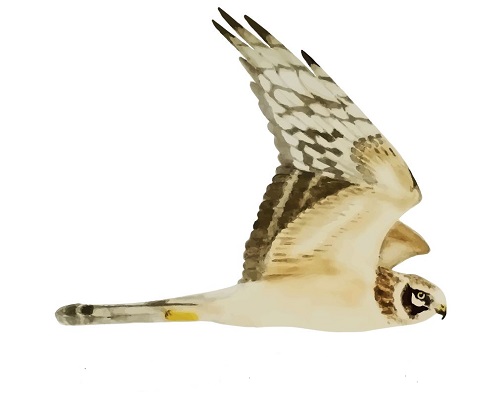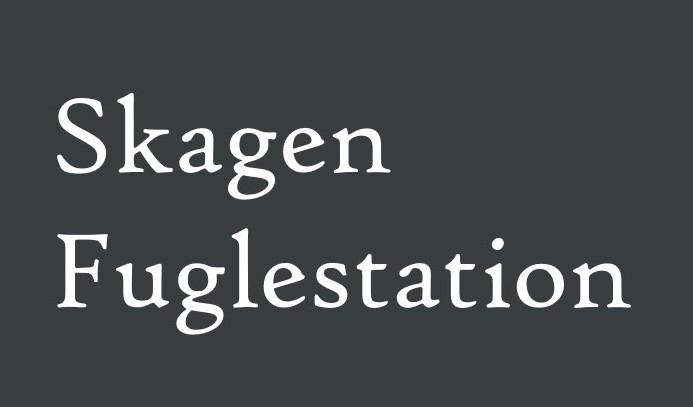Her på Skagen Fuglestations blog bringes korte nyheder i dagbogsformat om hændelser på fuglestationen.
Se indlæg fra måned: feb. (16)mar. (30)apr. (30)maj (31)juni (30)juli (31)aug. (31)sept. (30)okt. (31)nov. (29)dec. (11)
Merry almost-christmas
With the wind blowing and the wet cold clawing its way through clothes like a knife through butter, it certainly doesn’t entice anyone to go out to the tip to do migration count, so instead me and Simon once again went to the harbour to do some gulling. Simon had picked up some bread, but when we arrived at the harbour it started raining so we went to Simon’s second favourite spot in Skagen after the observatory: The fishmonger. We picked up some sandwiches, but while waiting it was fun to see some of the fish on display, it brought up some memories from when I was younger and used to fish with my grandfather on Faroe Islands.
 Goofy-looking Common Ling (Lange)
Goofy-looking Common Ling (Lange)
After the rain passed we went straight to the eastern pier where we checked the harbour mouth and the roosting gulls, quickly we found a Caspian Gull (Kaspisk Måge) 1k, but rather fast we refound the King Eider (Kongeederfugl) 1k male that has taken up residence in the harbour. From here we could see that it was quite close to the western pier so we hurried back to the car and drove down there, which was a smart decision! There we could see at relatively close range (300 meters) and get a good look at this rare bird showing an even rarer plumage.
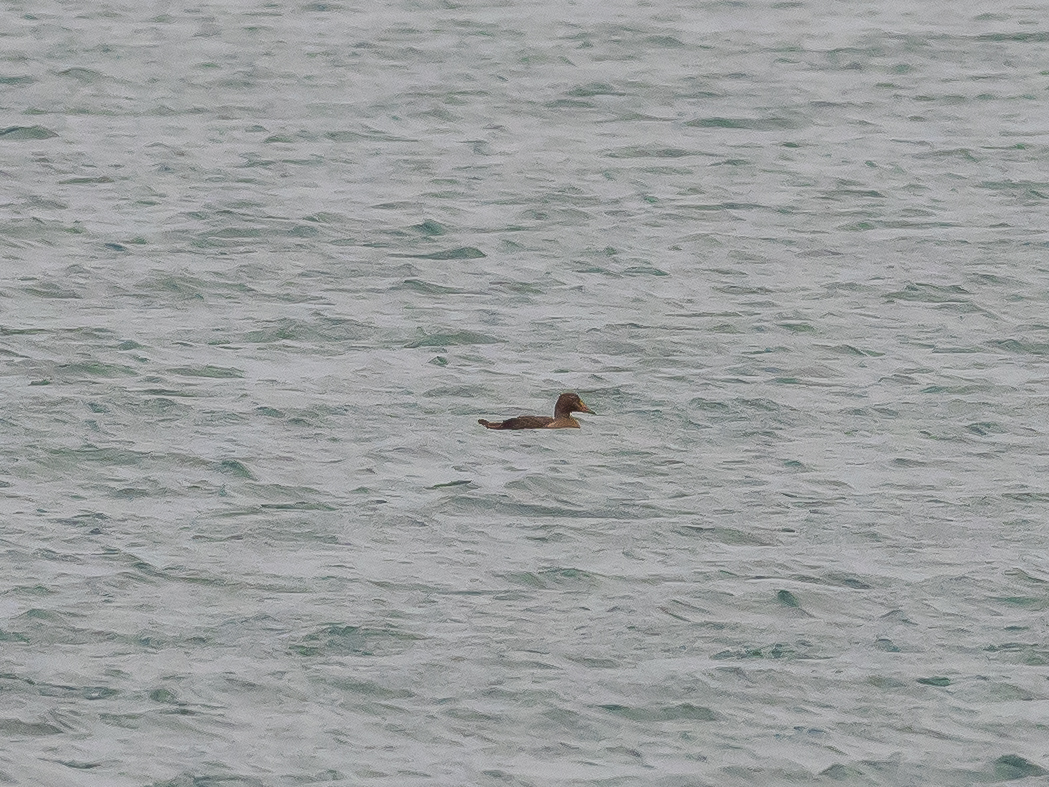 Close enough for the 300mm lens, what a cool bird. King Eider (Kongeederfugl)
Close enough for the 300mm lens, what a cool bird. King Eider (Kongeederfugl)
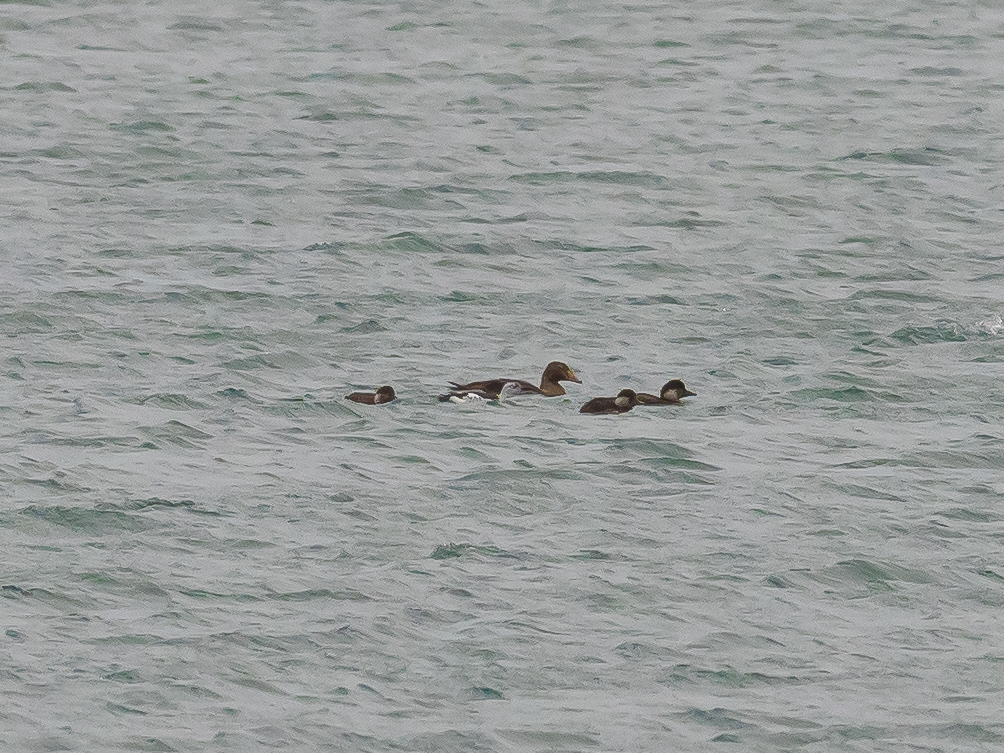 The King Eider joined an assemblé of Common Scoters (Sortand) and a Black Guillemot (Tejst) 1k
The King Eider joined an assemblé of Common Scoters (Sortand) and a Black Guillemot (Tejst) 1k
After a few minutes we were joined by Karsten Klausen and as he was putting up the scope, the bird took flight and flew further away from us. With plenty of birds in the bassine, we decided to go to central pier to feed some gulls, to see if we could pull another rabbit out of the hat, preferably in shape of an Iceland Gull (Hvidvinget Måge) or something rarer. Instead we were treated to close views of the aforementioned Caspian Gull.
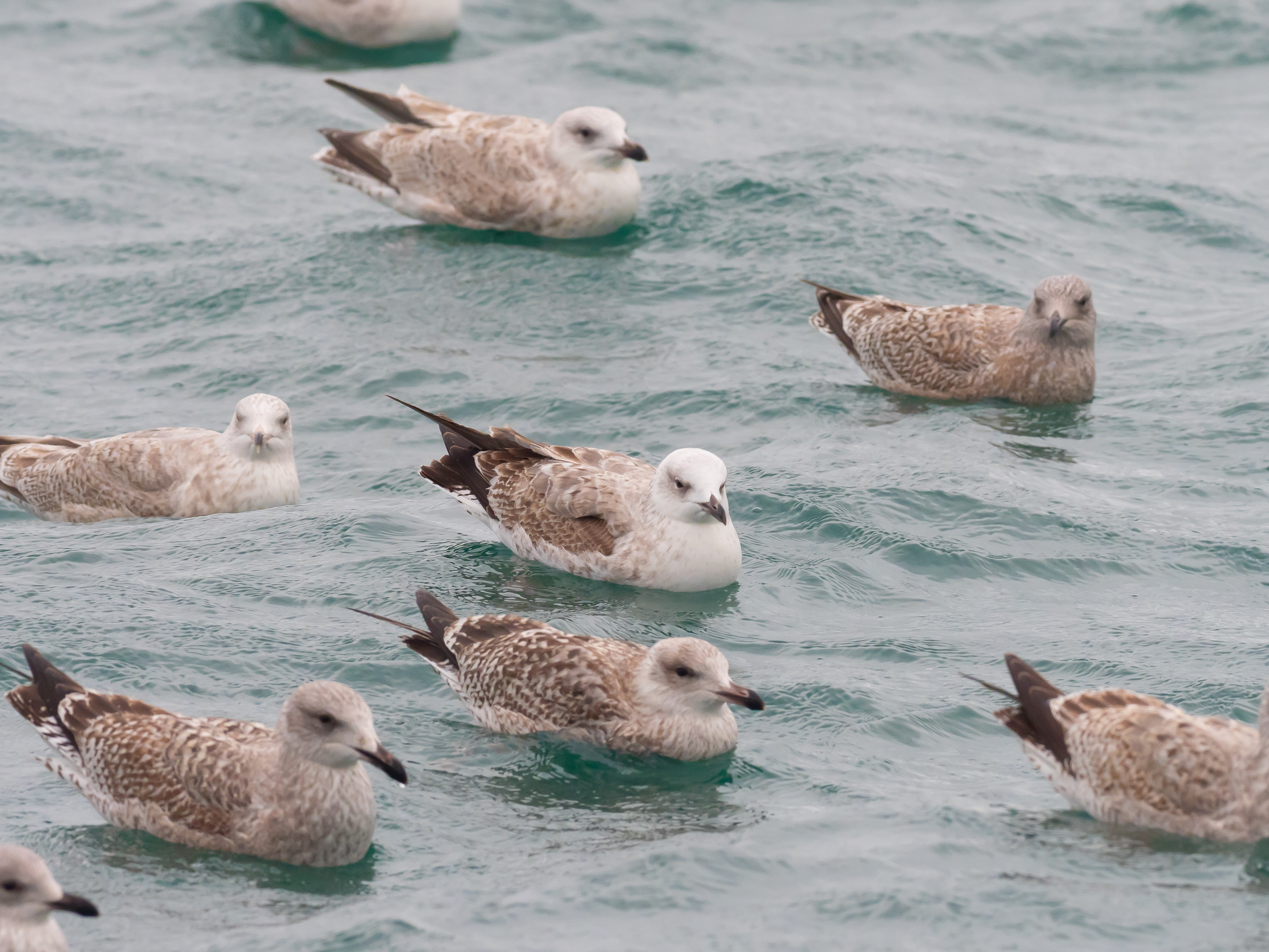 Caspian Gull (Kaspisk Måge) with the hundreds of herring gulls (sølvmåge)
Caspian Gull (Kaspisk Måge) with the hundreds of herring gulls (sølvmåge)
But as the weather turned for the worse we went to Skagen Bryghus to grab a beer, before doing a last stop at Højen Fyr. Højen Fyr turned out to be a bust with not that many birds, so we went back to the observatory to relax. Tomorrow I will be leaving for Sjælland to celebrate Christmas and new years eve, before returning in start January, as I will be staying till end January/start February.
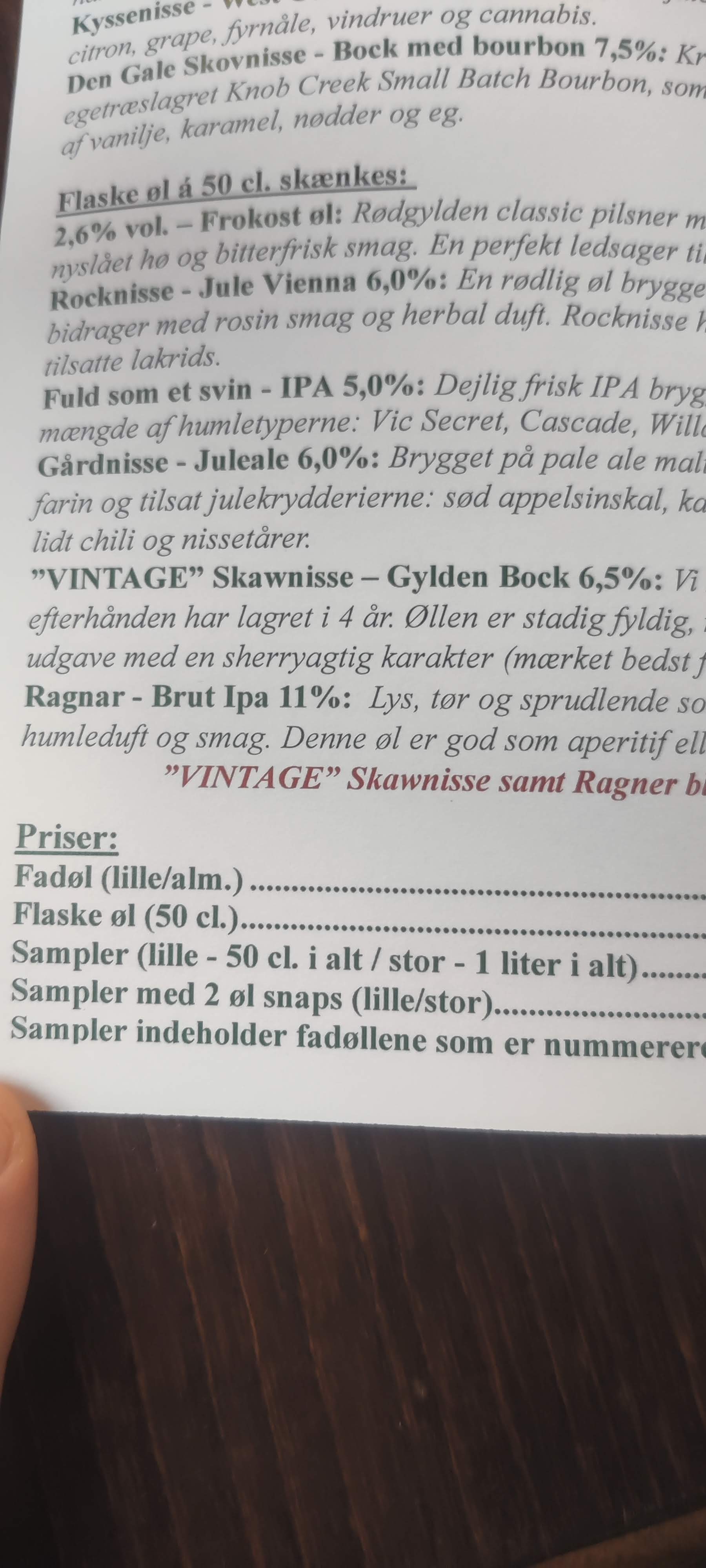 A beer named "Ragnar" strong, pale and dry - which is essentially just a description of me
A beer named "Ragnar" strong, pale and dry - which is essentially just a description of me
So happy Christmas and happy new years eve from Ragnar and Skagen Bird Observatory.
Link to today's observations from observers in the area
People at the station: Ragnar Smith, Simon S. Christiansen
Doing our due diligence at Skagen Harbour
Another day has passed at Skagen Bird Observatory, im still here, but I am only updating the blog when something exciting has happened, today was one of those days. Me and Simon went to the harbour to feed the gulls and even though there were no Iceland Gulls (Hvidvinget Måge) or Caspian Gulls (Kaspisk Måge), we still managed to find a pristine Lesser Black-backed Gull (Sildemåge) 1k that could be a good candidate for a Baltic Gull/ssp. Fuscus (Baltisk Sildemåge) and a very nice American herring gull-lookalike, which managed to induce some excitement.
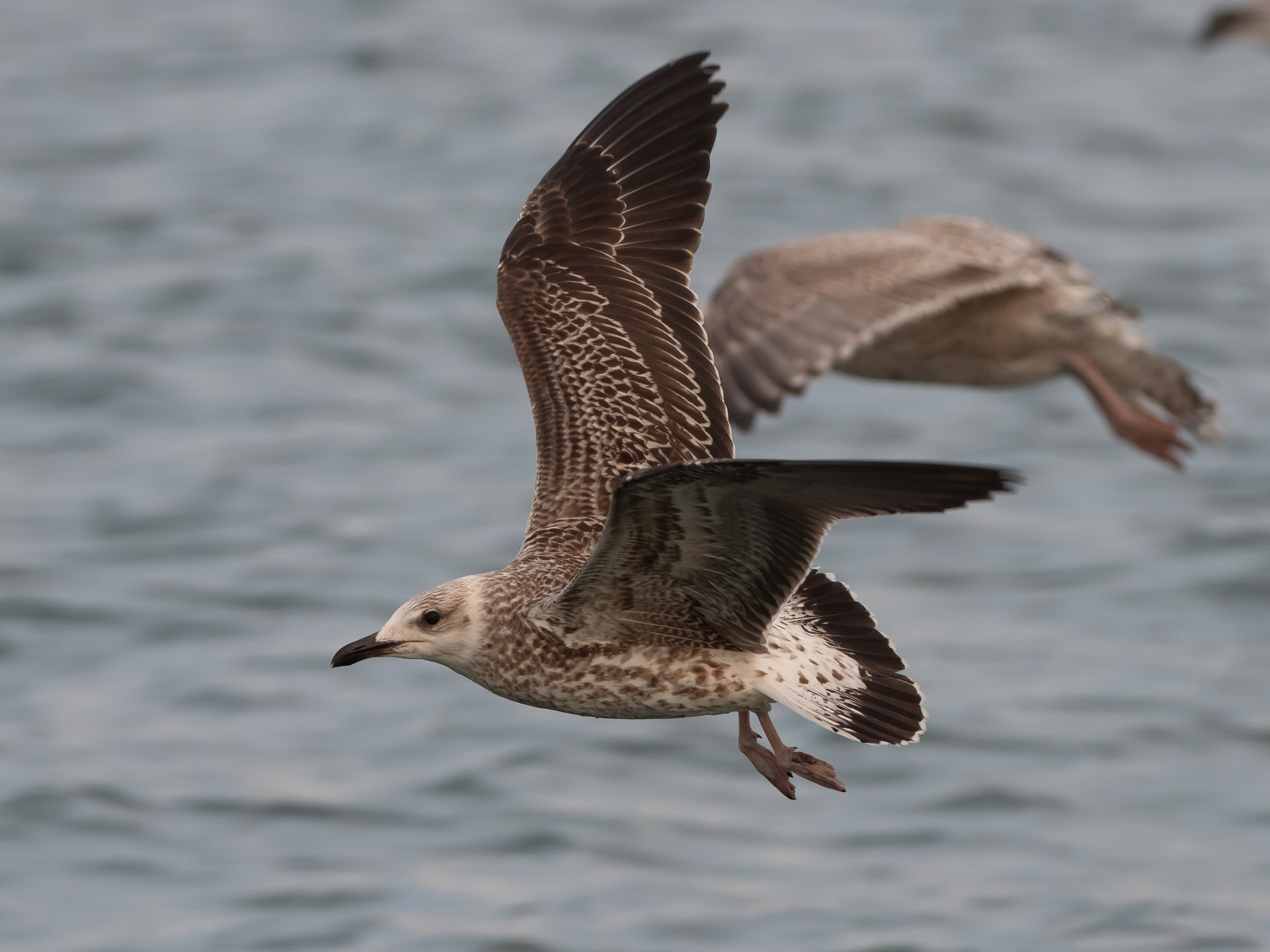 Pristine, crisp Lesser Black-backed Gull in almost full juvenile plumage, which could indicate ssp. fuscus, but we will probably never know
Pristine, crisp Lesser Black-backed Gull in almost full juvenile plumage, which could indicate ssp. fuscus, but we will probably never know
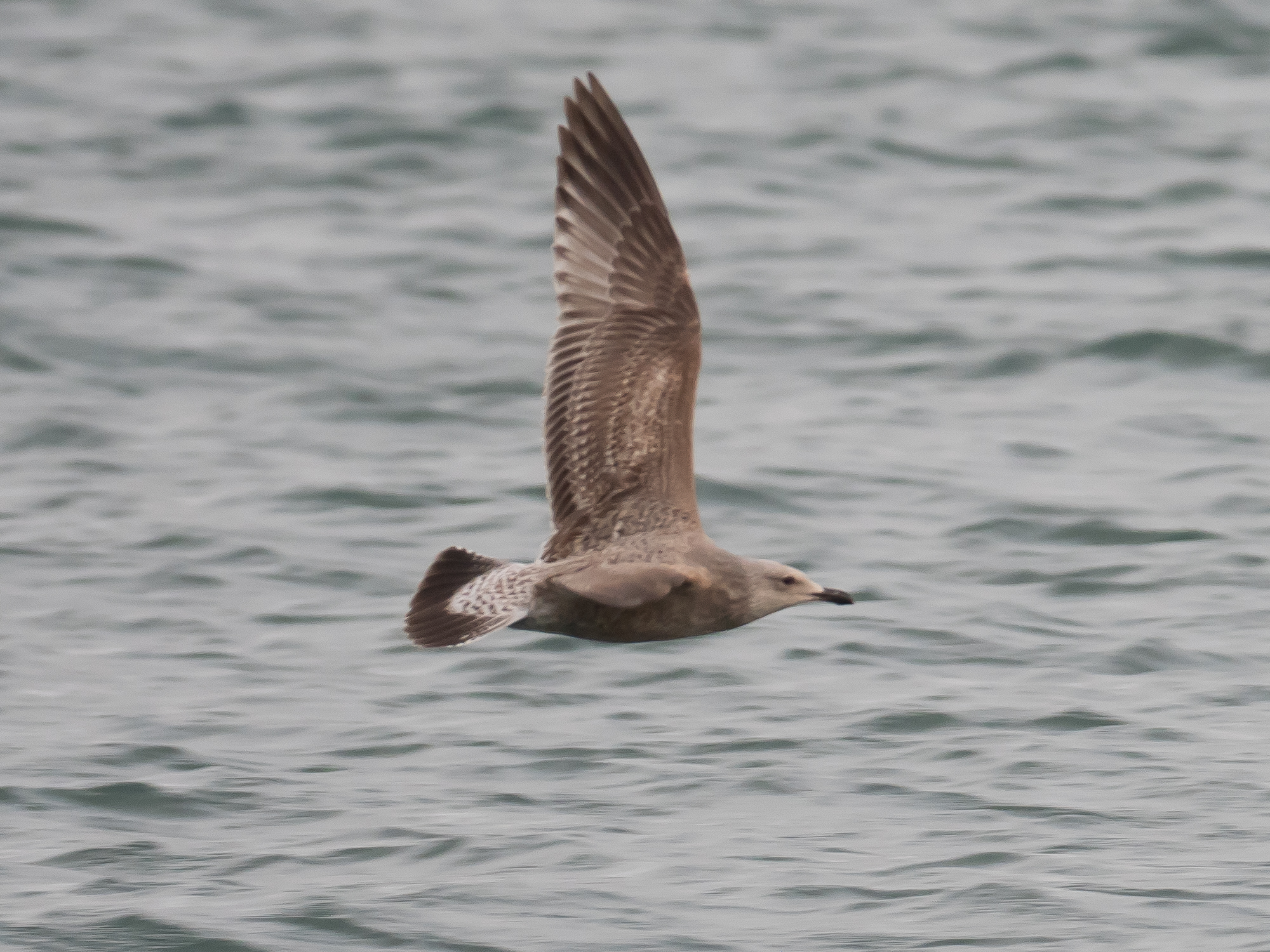 American Herring-gull lookalike - note the almost black tail and dark unpatterned underpart and greyish brown colour. But the devil is in the details, the barring on the uppertail coverts and undertails coverts is not dense enough
American Herring-gull lookalike - note the almost black tail and dark unpatterned underpart and greyish brown colour. But the devil is in the details, the barring on the uppertail coverts and undertails coverts is not dense enough
After emptying the bread reserves into the harbour for the sake of the gulls, we went to eastern pier to check the harbour mouth and rocks flanking the harbour bassin for any funny birds, and in the not too strong wind, there were a good handful of eiders (Ederfugl) and Common Scoters (Sortand) on the water and plenty of gulls on the rocks. But as I looked into the bottom of the harbour bassin with scope I saw a familiar sight of a dark duck, slightly bigger than a scoter with a pale head and breast, and a pinkish orange bill – BOOM 1k male King Eider (Kongeederfugl)! Crazy to refind it in the harbour after no sightings of it for a week at Grenen. We got into the car and drove to the southern end of the harbour to get better light and a closer look for the awesome bird. When we arrived, Erik Christophersen had just arrived and it didn’t take many seconds before it was refound and everyone got to see it much better. It was so good to see it this well after mostly seeing at a huge distance under somewhat unfavorable conditions at Grenen, Skagen.
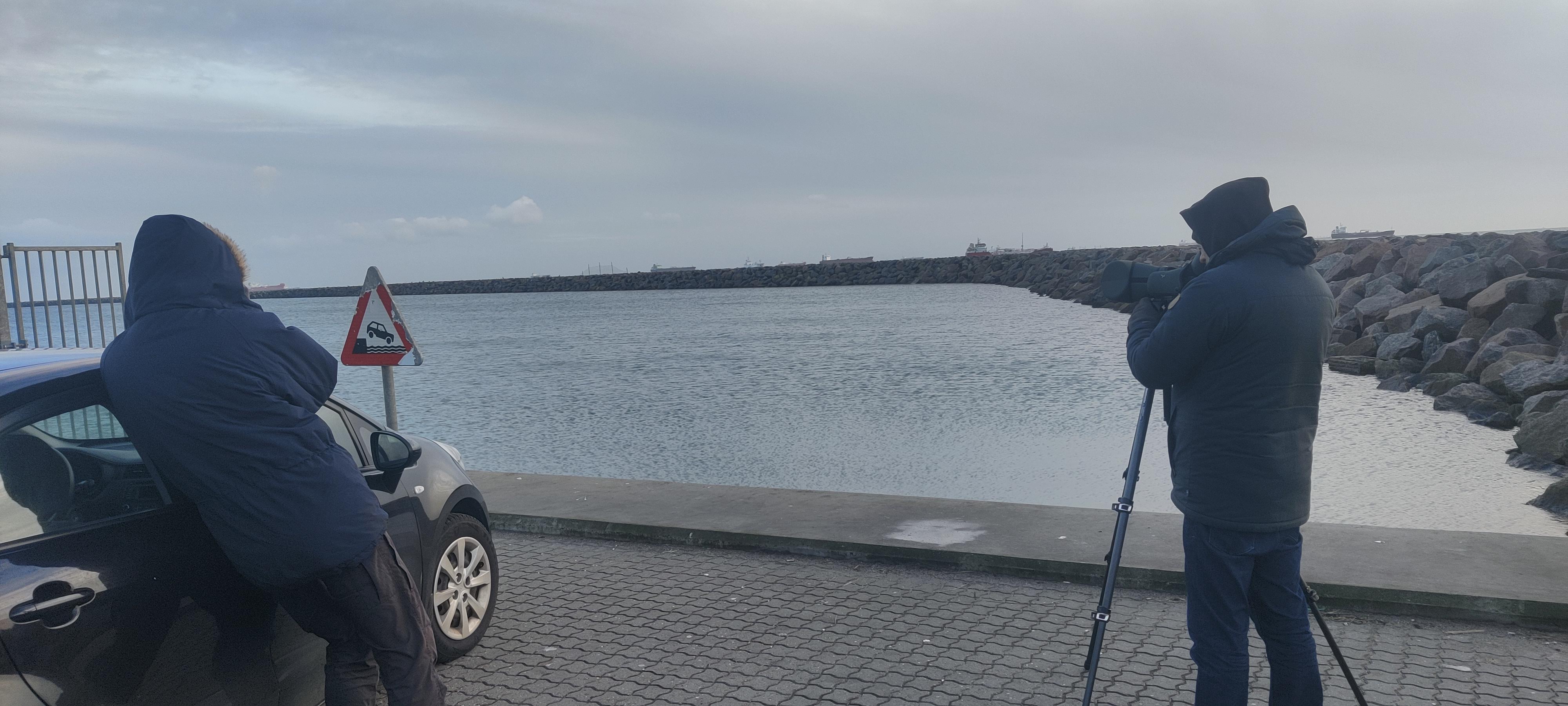 Erik Christophersen on the left and Simon on the right
Erik Christophersen on the left and Simon on the right
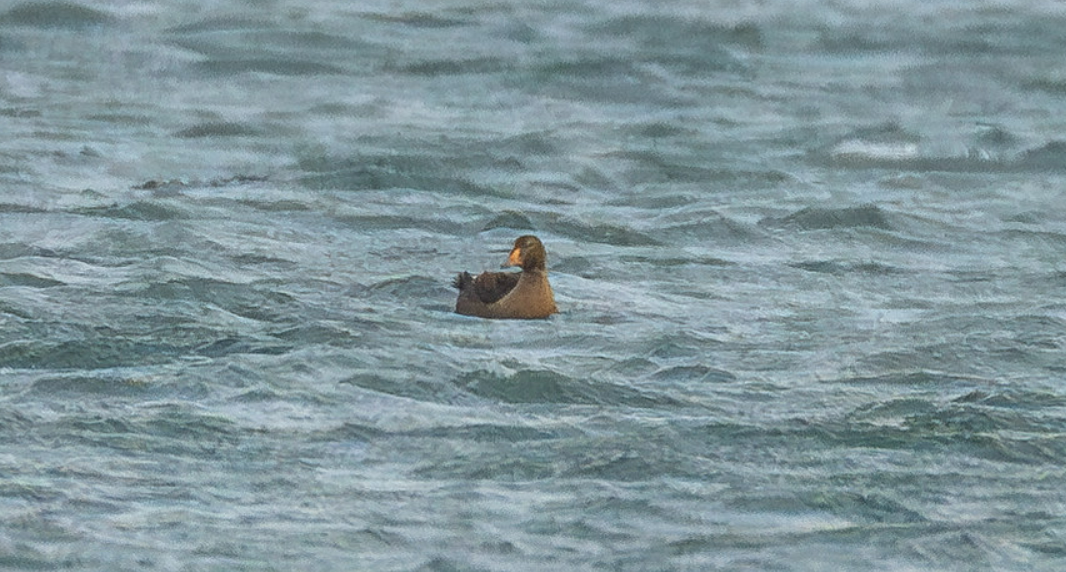 King Eider 1cy male, probably the best, if not only photos of a King Eider in this plumage taken in Denmark. Erik Christophersen took this awesome photo. Check his flickr here
King Eider 1cy male, probably the best, if not only photos of a King Eider in this plumage taken in Denmark. Erik Christophersen took this awesome photo. Check his flickr here
After a few minutes Knud Pedersen arrived with the rest of the Christmas Dinner guests and they all got a good look at this rare visitor. Satisfied with this round of harbour checking, Simon took me to Lidl were I did some shopping and then I was dropped of at the lighthouse. Now I have made pizza, that should last me for a few days. The next few days of strong winds could possibly bring some cool birds.
Link to today's observations from observers in the area
People at the Station: Ragnar Smith, Simon S. Christiansen
High Arctic sends its regards
Finally the wind quiet down to still stand, which meant it was finally time to go outside. I packed all my equipment and went for a walk along the shore, checking the sea for any interesting birds. After checking Kattegat with nothing to show for I finally arrived at Worlds End 3, first time I had been there since we closed down the standardised counting, as the weather had turned against us. Though I had hoped for some gulls roosting on the beach, to my disappointment there were none at all, so I turned my attention towards Skagerrak, where to my surprise roosted hundreds of melanittas and several eiders! For the seasoned sea birdwatcher, a sea full of melanitta-ducks is always fun as they can hold many fun species such as White-winged Scoter (Sibirisk/Amerikansk Fløjlsand), Surf Scoter (Brilleand) and Black Scoter (Amerikansk Sortand), so I started the process of slowly going through the many black and brown ducks bobbing around in the minimal waves the quiet weather offered.
It was nice as there for the first time immemorial the sun was shining and I could feel it warm me up a bit. But panning left and right along the shore offered nothing surprising, except aprox 200-300 Velvet Scoters (Fløjlsand), which is quite a high number for Skagen. After spending aproximately 1 1/2 hours at Worlds End 3, with nothing to show for, and seeing many more ducks deserving to be looked at further up the coast, I moved my OP on top of a tall dune west of the sandworm track, where you a nice vantage point towards NW. This particular dune is my prefered gull-checking dune as many of the gulls usually roost right in front of it, so you can sit down and relax while "gulling". Short after I had sat down, gulls started arriving and landing in front of the dune and suddenly a very nice adult Iceland Gull (Hvidvinget Måge) turned up! What a beaut. It landed near a small pond, where I tried to get some photos, but other gulls were constantly blocking it and before I knew it, they were flushed by two tourist, damnit.
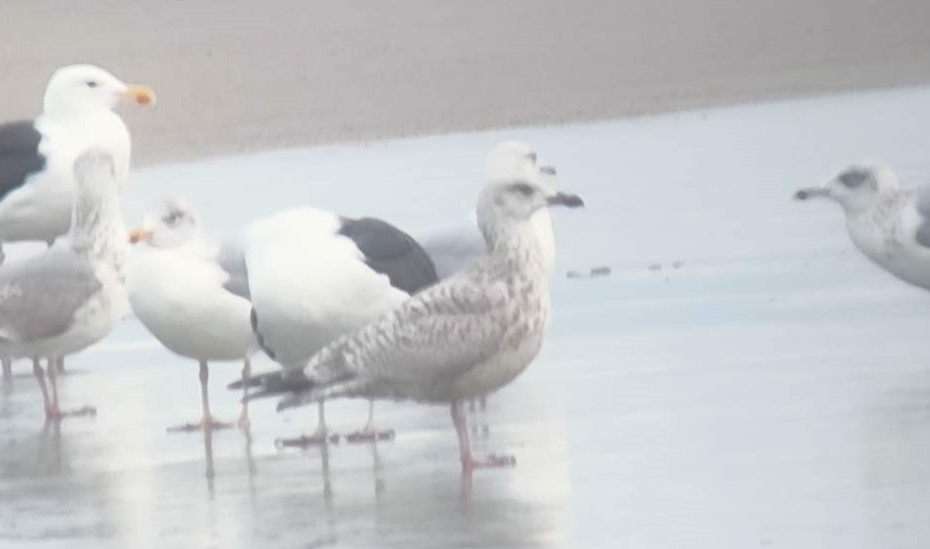 Yeah, suboptimal, but the Iceland Gull is behind the young Herring Gull (Sølvmåge)
Yeah, suboptimal, but the Iceland Gull is behind the young Herring Gull (Sølvmåge)
The gull landed out of view on the beach, so I decided to wait for it move again, while doing so two caspian gulls (Kaspisk Måge) joined the party. Had it been anywhere else in Denmark, an Iceland Gull and two caspian gulls would have been an absolute mindblower of a combo, but this isn't "anywhere else in Denmark", this is Skagen, so it had barely registered on the richter-scale. Though that would change quite quickly. The aforementioned ducks had been moving around a lot, so while the gulls were a nice distraction, my main goal was trying to find a rare duck and after panning through the hundreds of ducks 20-30 times, I started wondering if I should pack my stuff and head down to the Iceland Gull and try get some better photos, and just when I did my last check, I saw a strange duck with dark brown body, pale, mottled breast and brown head, with a yellow-rosa bill! I dove down and very quickly I went through my inner library of birds and the only one that fit was young male King Eider (Kongeederfugl)!
Though I have seen a handful of them on Faroe Islands and one adult male in Skagen before, I had never seen a young male before. It then resurfaced and it looked even more like one. Due to its behaviour it was hard to see anything definitive on, but I slowly piece together the puzzle and I called Simon and asked if had the time to join me as I had a possible King Eider 1k male. Sadly he didn't as he was in the process of painting his staircase, but instead we talked through the different field marks I had seen on the bird and slowly I reached the conclusion that it must be a 1k male King Eider! I called Knud, he said he could be out there in 30 minutes and then I called out my second Zello of the day. The rest of the time I just followed the King Eider while it swam around and foraged, in the process I accidently found a Great Northern Diver, whoopsie. Knud finally joined me and we managed to get some great documentation of this rarity! What a day and what a species, a new self-found tick of the rarest plumage recorded in Denmark.
Now why today post-title? The quick-witted would know that all the highlights of today are birds residing in high arctic/north pole, so let us hope that it will be a recurring theme, with birds from up there will drop by Skagen.
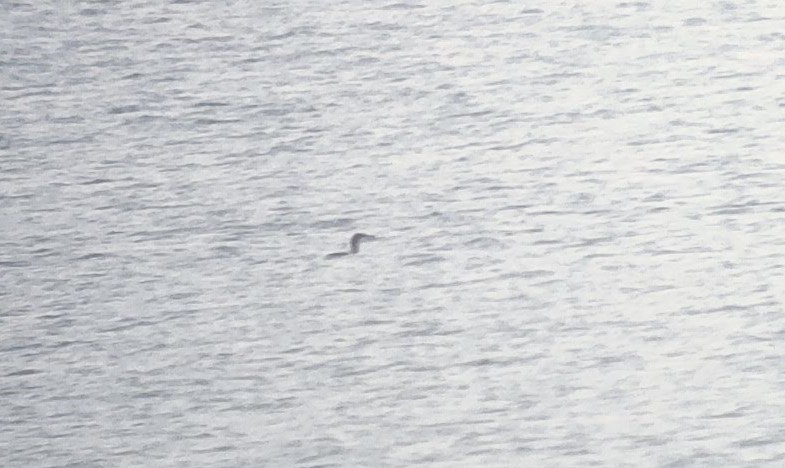 Yes, that is a Great Northern Diver, no I did not try to acquire any better photos
Yes, that is a Great Northern Diver, no I did not try to acquire any better photos
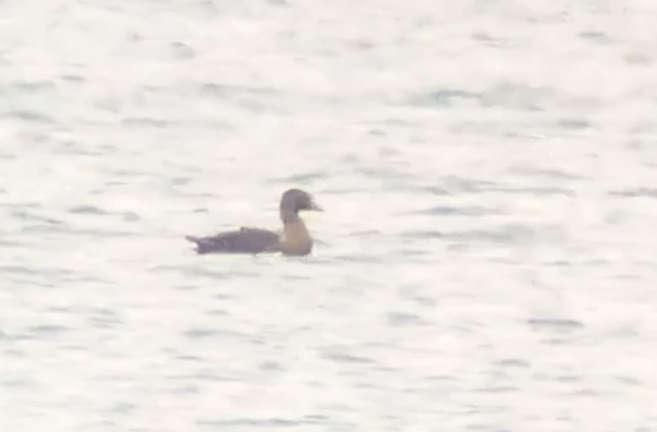 Prince Eider aka King Eider 1k male - a screengrab from Knud Pedersen's video
Prince Eider aka King Eider 1k male - a screengrab from Knud Pedersen's video
Highlights at the obs:
Velvet Scoter - Fløjlsand: minim. 200, a quite high count
Iceland Gull - Hvidvinget Måge 1 adult, probably the same one that Knud Pedersen found 8 days ago
Great Northern Diver - Islom 1 1k+, Skagen is the best place for this otherwise scarce species.
King Eider - Kongeederfugl 1 1k male, 11th record for Skagen of this species and fifth record of a king eider in this age/plumage in Denmark.
Link to today's observations from observers in the area
People at the station: Ragnar Smith, Simon S. Christiansen
King of the Castle
It has ended, autumn season has ended as Emma boarded the train to Aalborg. Normally it would be mean that the observatory has been closed down and the next you’ll hear from the blog is when the first of the spring team arrives. But I will stay at the observatory till around mid January, still birding in Skagen and taking care of the observatory, which means the blog will be updated semi-regularly depending on what is happening, hopefully some pictures of a nice Ross’s Gull (Rosenmåge) or Ivory Gull (Ismåge) will be featuring on the blog, but we will see.
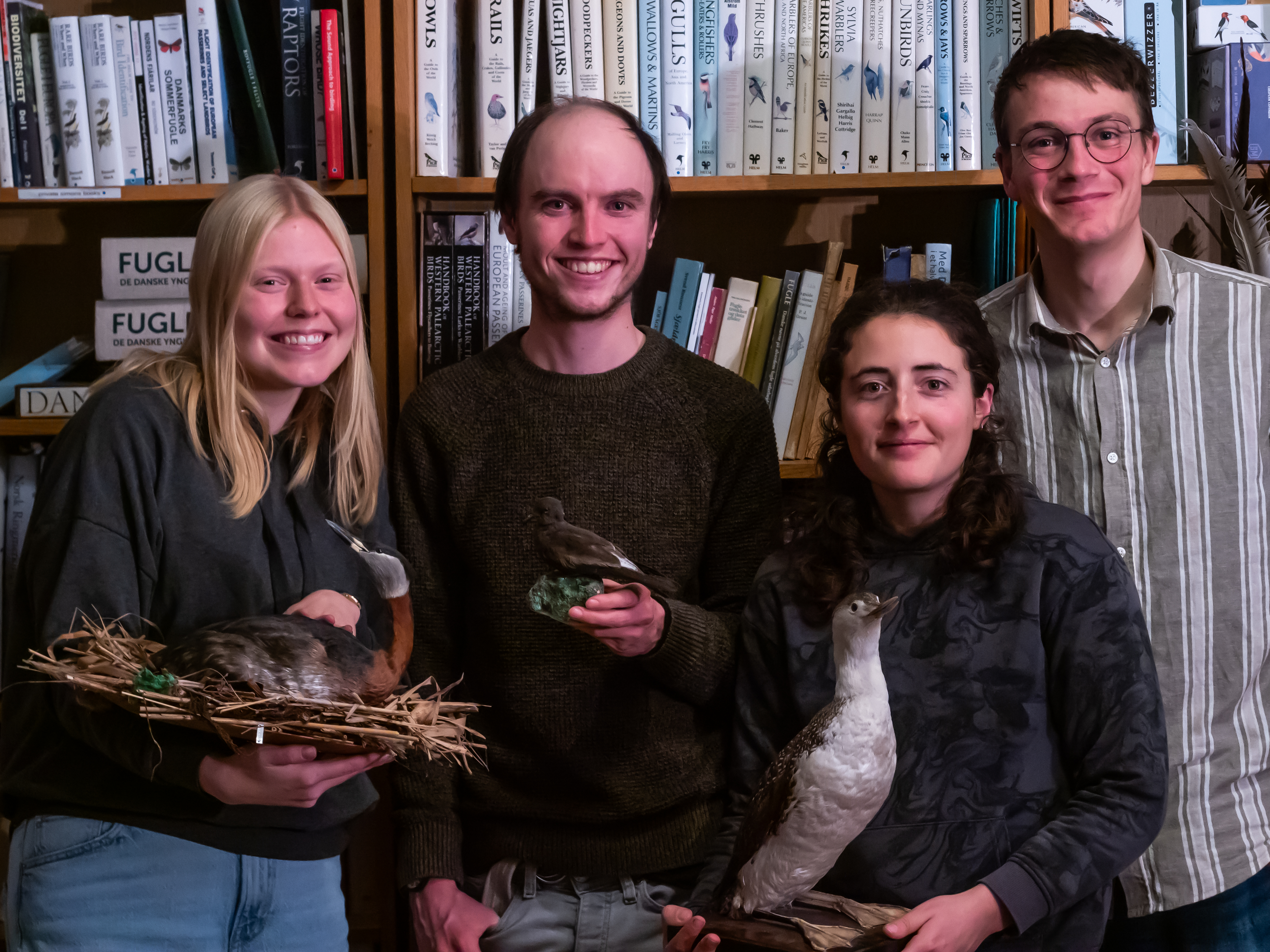 A group-photo of the team before they all left, except me - Highlander-rules, there can only be one
A group-photo of the team before they all left, except me - Highlander-rules, there can only be one
Today started with Emma going out to Worlds End 3 to see the place for the last time this season, but hopefully not for ever, while I did some obs from the lighthouse, though nothing noteworthy was seen. After that we all went to the station to drop off Emma, so she could catch her train, I did some light shopping. The harbour got a quick once over, to see if we could find the White Wagtail (Hvid Vipstjert) that was seen at the harbour, but no dice. I was then dropped off at the station again, now completely alone at the station for the first time since ever. A little bit of cleaning and washing up and contemplating watching the “The Lighthouse” by Robert Eggers to see what is in store for someone that has to stay at a lighthouse for 1 ½ - 2 months, I heard it’s about two men having a lovely time at a lighthouse with nothing bad happening.
The next coming days the weather will finally be fit for proper birdwatching as the wind is slowly going down and tomorrow the sun might be peaking out from the clouds.
People at the station: Ragnar Smith, Simon S. Christiansen, Emma Fabré
My last rainy day
This morning Mara left very early. Simon took her to the train station, direction the Germany. Thomas had also his flight this morning, toward the UK.
Ragnar and I woke up late in the morning. The weather was terrible, the wind was strong and it rained all the day, preventing us from going outside. We finished the last tasks before closing the station, like some cleaning and checking a few things.
In the afternoon, I climb to the lighthouse for the first and the last time. It was very windy, so I quickly came back down.
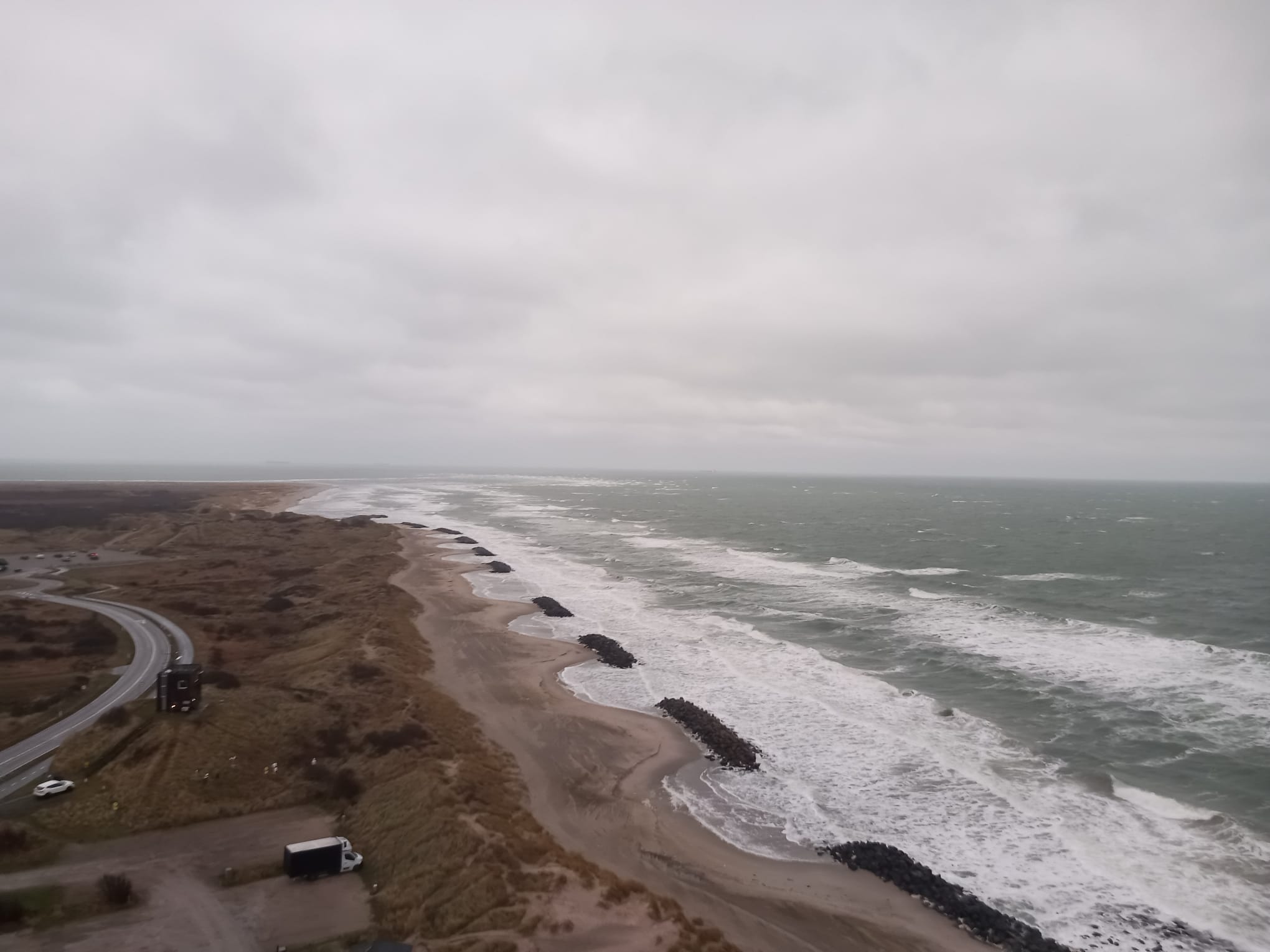
Tomorrow I will take the train to Aalborg and then a plane to Bordeaux in France. I have been here since mid-September, three months to the birds observatory. It was a really nice experience! I mostly participated in the migration counts but also started learning bird ringing. I learned lot of about this two activities thanks to the other volunteers and Simon. I see so many amazing birds, Sooty Shearwater (Sodfarvet Skråpe), Shore Lark (Bjerglærke), Little Auk (Søkonge), Yellow-browed Warbler (hvidbrynet Løsanger) just to name a few. I had a wonderful time in Skagen! Au revoir, et peut-être à bientôt!
Ringing (Nordstjernvej - Michael Ancher):
Gulspurv - 1
Stillits - 1
Grønirisk - 3
Total; 5
Today’s observations on Dofbasen from observers in the area
People: Ragnar Smith, Emma Fabre, Simon Sigaard Christiansen
All good things come to an end
Hej!
A great last day was ahead of me, when I woke up this morning, I just didn't knew it at that time. A little bit sleepy I got ready and after some office work and packing my stuff, Simon came by to pick us up for a special ringing project. At Batteriskoven a Kingfisher/Isfugl was spotted and together with Michael Ancher we wanted to catch and ring it. The set up was fairly easy, as we just put up a short net across the creek. Thomas volunteered to step through the water, that got dangeroulsy close to flowing inside the boot. After the net was up, Michael walked along the water to get the bird to fly in our direction. It did not even take 5 minutes until we saw the net move and Thomas then jumping into the water to get the blue cristal out of the net. It was a beautiful young female. What a nice bird to see so close and thanks to all for the great teamwork!
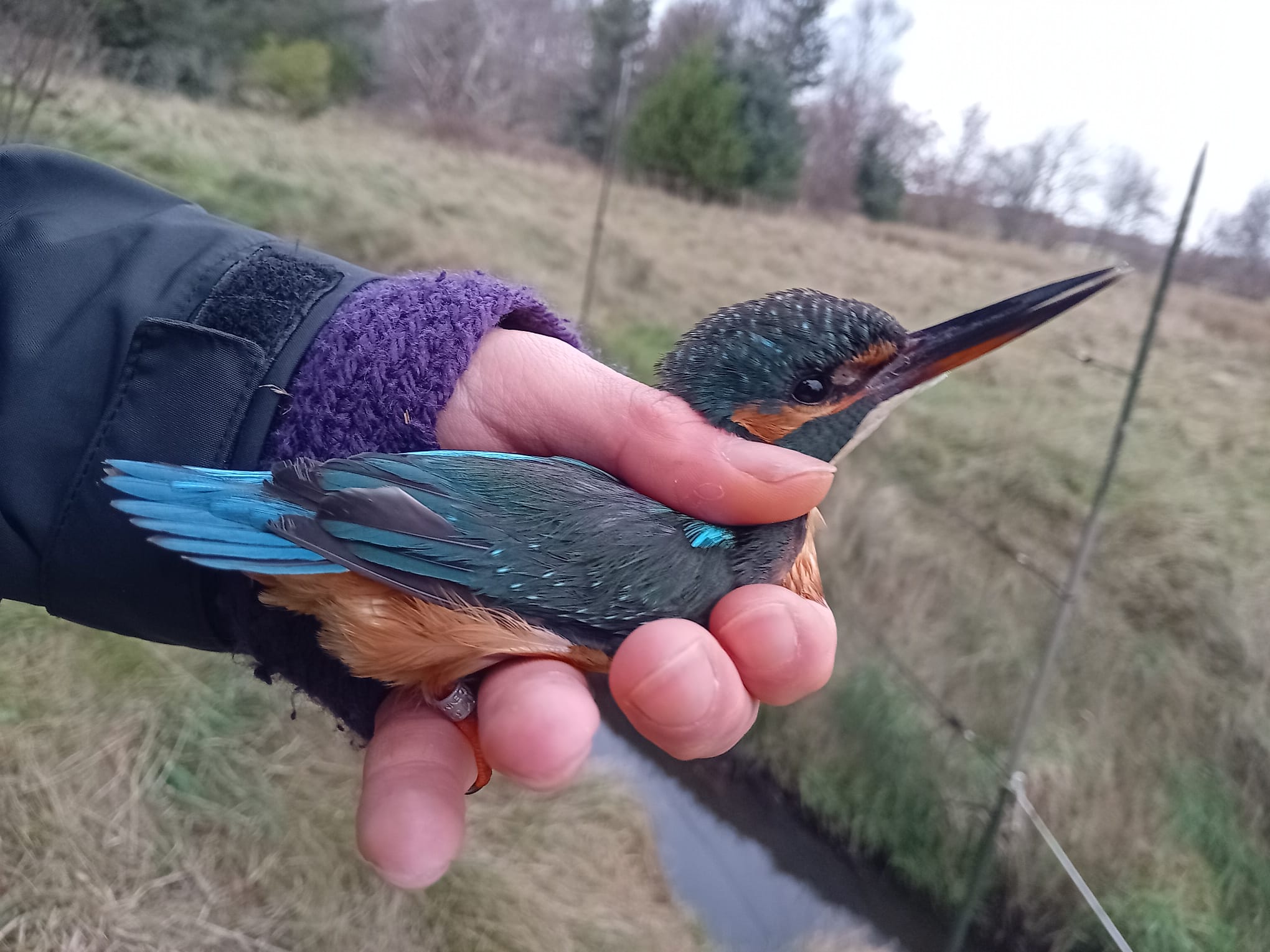
Young female Kingfisher/Isfugl
On our way back to the lighthouse we spotted some Crossbills/Lille Korsnæb feeding in the pine trees and Emma was able to take some photos. She wanted to photograph them all season and finally got a good chance.
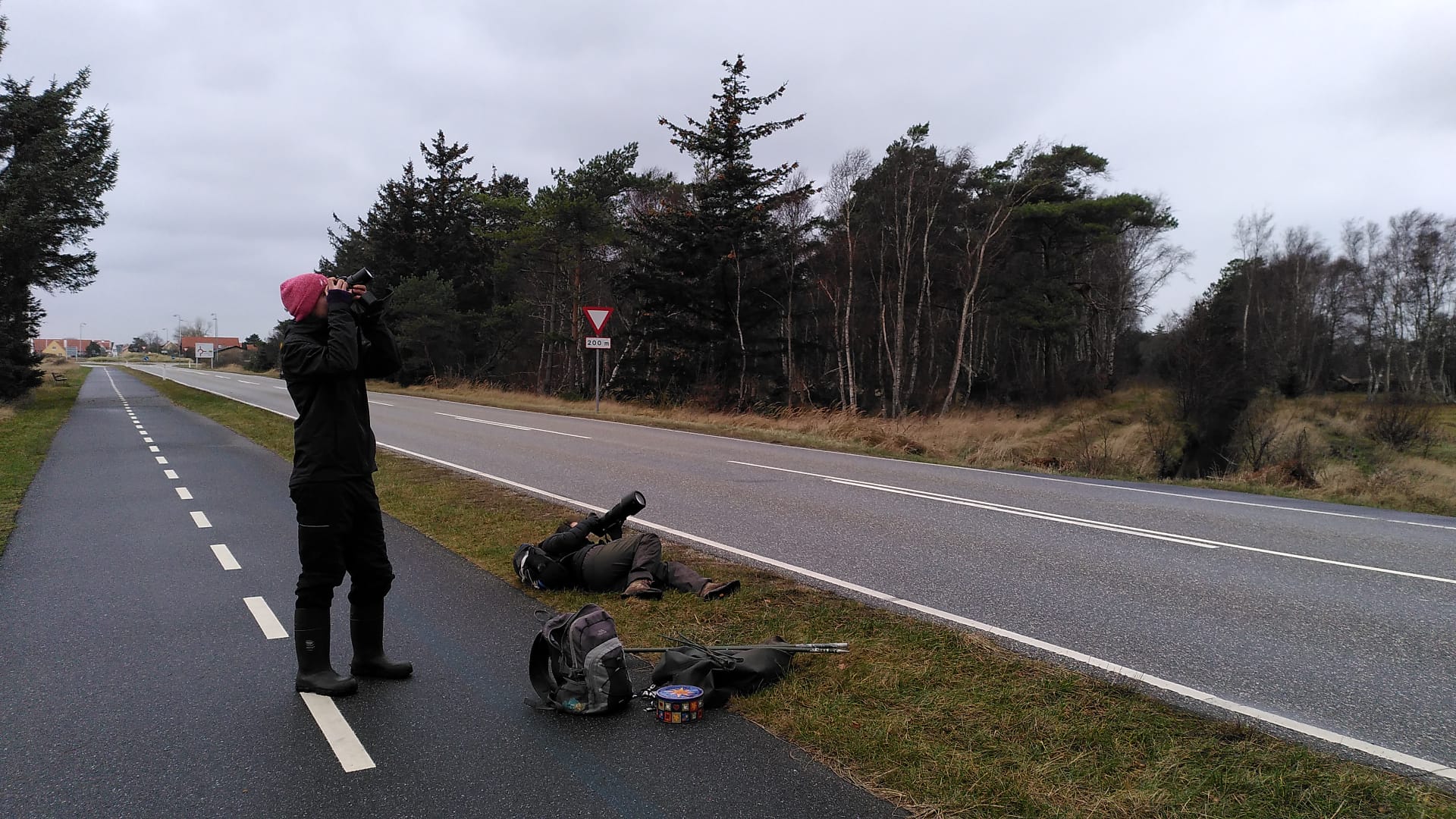
Emma giving everything for a good photo
Back at the station - dry thanks to a lift from Simon - we had a nice pasta lunch and decided to spent the afternoon going to the harbour to look for some gulls. Just as we where getting ready and putting on our jackets we recieved a Zello message from Knud, and while Ragnar was translating for us, he realised that we have to move quick. So he just yelled: "Guys, you need to go out now, if you want to see an Iceland Gull!". So of course, no questions asked, we put on our shoes and hurried outside. Knud saw an Iceland Gull/Hvidvinget Måge from World's End 3 flying into Kattegat close to the shore. So that was what we where looking for and that is what we saw indeed. All four uf us had really nice views of the Iceland Gull flying amongst other gulls. It flew in the direction of the harbour, turned around and followed the coastline back to Grenen. That was a proper cool last new bird species for me from my stay here!
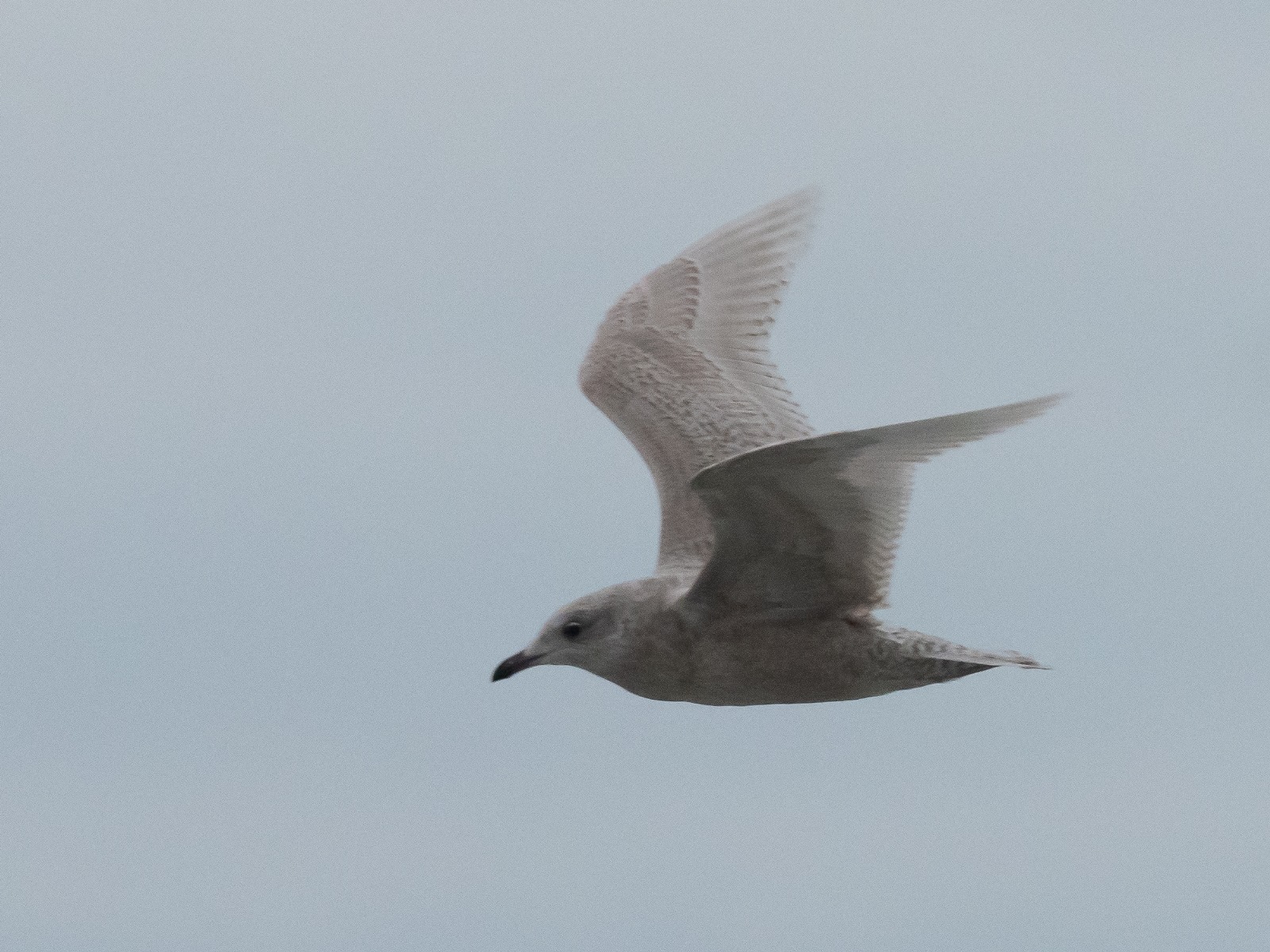
Niceland Gull/Hvidvinget Måge
The plans to go to the harbour where not off the table yet, even though it already gor dark when Emma, Thomas and I arrived at our gull feeding spot. We had again quite the competition, but managed to attract a small flock of gull for our own. Some Black-headed Gulls/Hættemåge where amongst the Herring Gulls/Sølvmåge. And behind us was a pair of Rock Pipits/Skærpiber socialsing with a White Wagtail/Hvid Vipstjert.
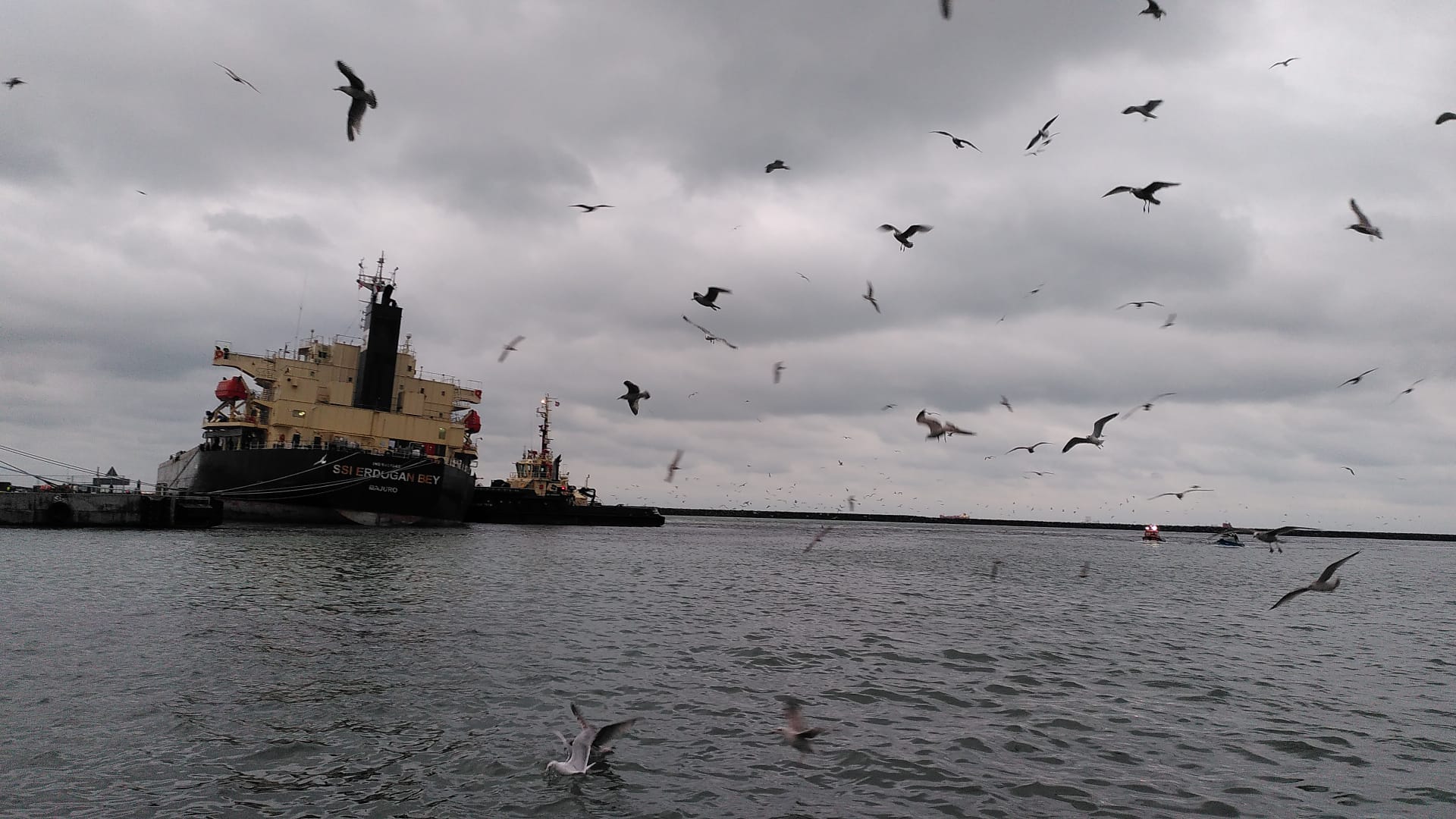
Ships, gulls and the smell of fish
Because we all had some Kroners left in our wallets, we went on a little shopping trip and good some food. After dinner we sadly had to say goodbye to Thomas. He is the first one of us 4 leaving. Have a good trip home, Thomas! The remaining three of us ended the evening with a new card game I bought, Uno - no mercy, and oh boy I should have known that Ragnar takes that literally.
With this being my last day I want to thank everyone I met along my stay for the amazing time. And maybe this is not the last blog I will write on this page. So, vi sees!
Highlights from the observations:
Iceland Gull/Hvidvinget Måge
Ringing (Batteriskoven):
Isfugl - 1
Ringing (Nordstjernvej - Michael Ancher):
Bogfinke - 1
Grønirisk - 1
Totals = 3
Today’s observations on Dofbasen from observers in the area
People: Thomas Weston, Mara Glane, Ragnar Smith, Emma Fabre, Simon Sigaard Christiansen
My last blog before I leave tomorrow…
Today started with a cold bracing wind coming from the East and it was another cleaning day, completing those odd jobs that need doing before the station closes very soon.
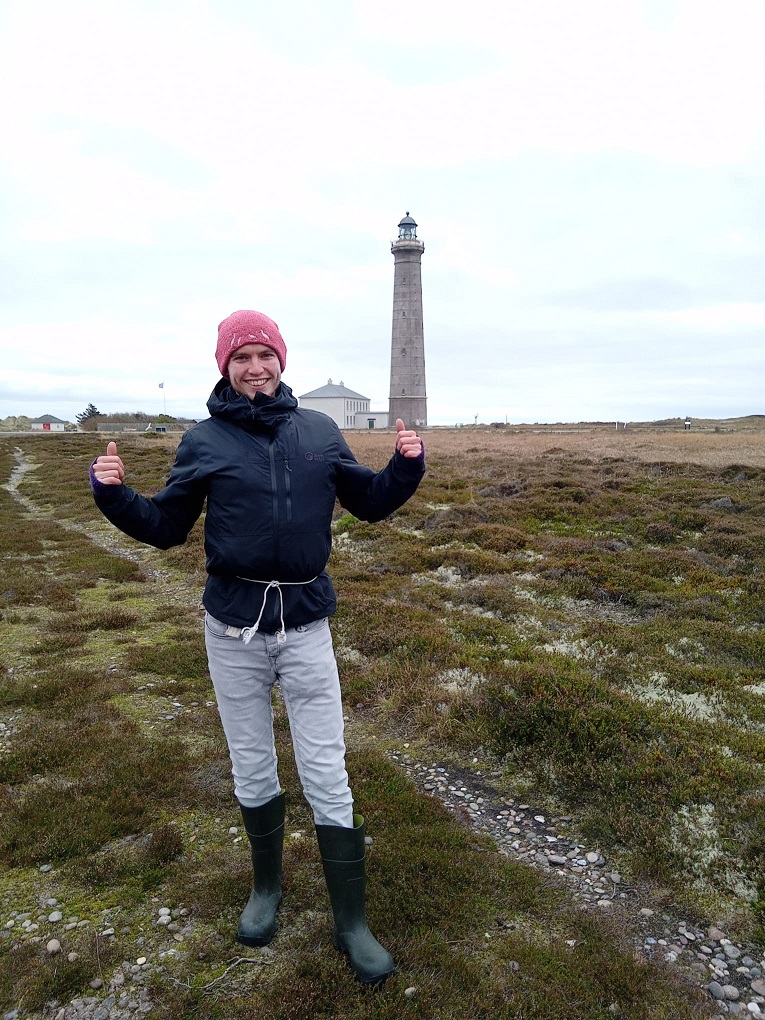
An intruiging way of taking the nets back to get some extra hands for the other bits and bobs - thank you'?' Mara for the pic.
Mara and I started with the nets in the lighthouse garden and taking them down before the predicted rain arrived later. We didn’t have enough hands, but some genius moves resulted in an efficient way of carrying back everything, even if it made me look like I had a muscle score of 3, fat score of 1! A very bird ringing pun there so if you know you know. We sorted the last remaining ringing kit, bird bags and bits so that’s set for next year. Meanwhile, Ragnar cleaned the bikes and Emma cleaned the stairs resulting in a mix of gulls (måge) seen flying by as well as a few Hooded Crows (Gråkrage) too. Then both Ragnar and Emma fixed the tripods whilst I sorted personal photos into the photo archive and inputted colour ringed gulls we recently saw. One of the adult Herring Gulls (Sølmåge) had not been resighted since it was a chick in 2020 and was originally ringed in Norway, where the majority of black with white colour ringed large gulls are from. Jobs were a bit thin on the ground, but Mara finished cleaning windows in the guest apartment. There is not a lot more that needs cleaning now!
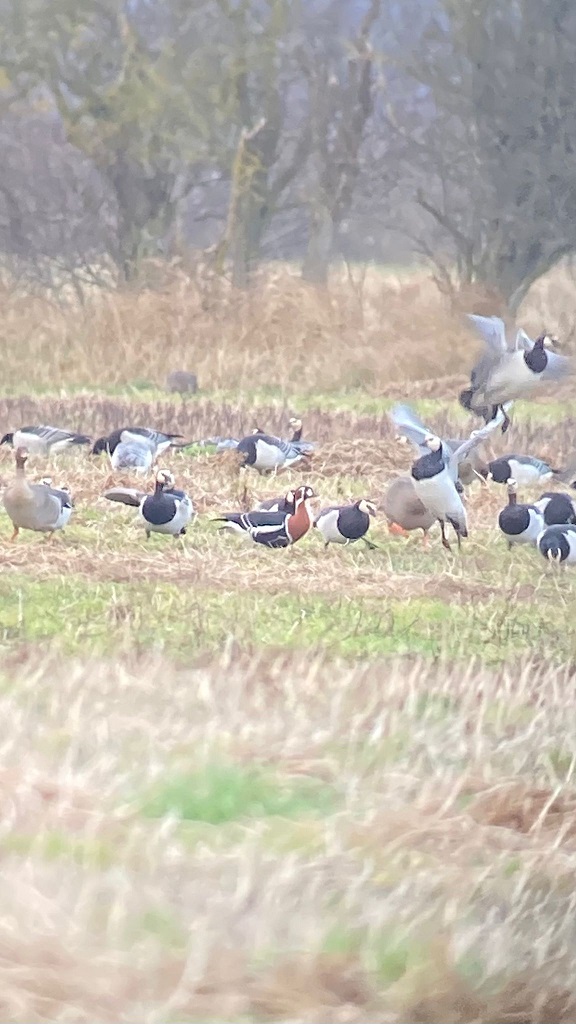
A super nice goose species, the Red-Breasted Goose (Rødhalset gås) at Lille Vildmose by Lisa.
Meanwhile, Lisa found a Red-beasted Goose (Rødhalset gås) at Lille Vildmose. Albeit not in the official recording area it is a very noteworthy species and a crazy find within the Barnacle Geese (Bramgås). Congratulations!!
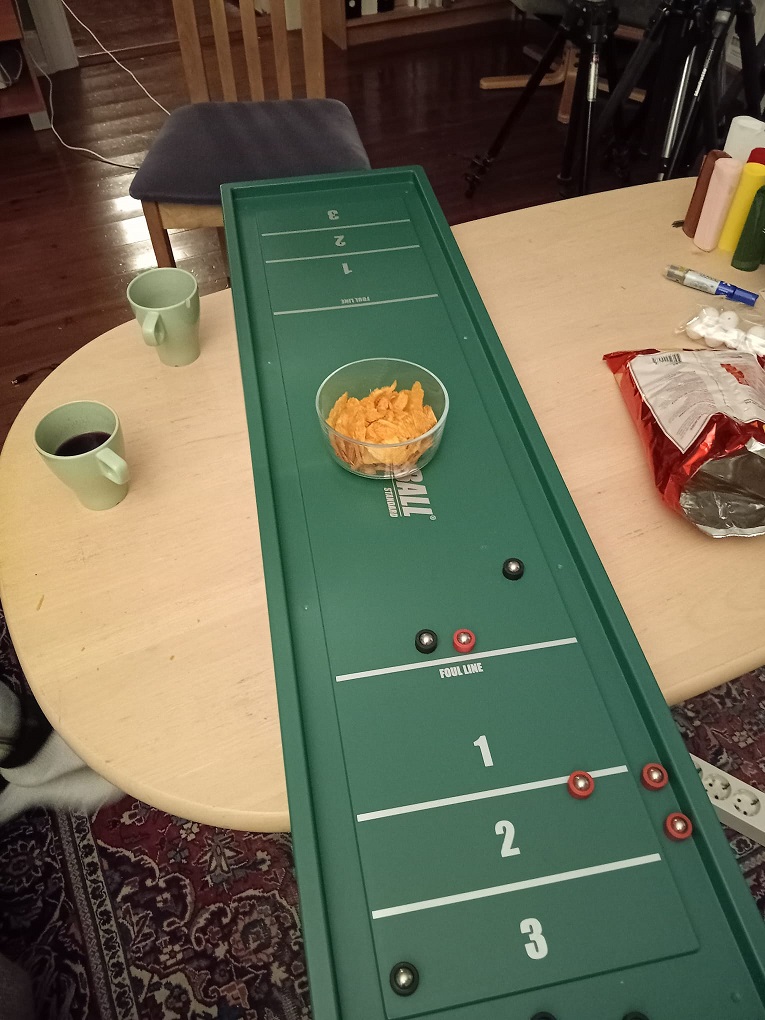
Shuffleboard - a must play game!
Back at the obs, a little after midafternoon, Simon picked us up for a last group meal in Skagen. We stopped off at the Brewery for a drink before making our way round to the restaurant where we enjoyed a delicious meal. We then came back and played games of Shuffleboard, where Simon won of couse! Thank you, Simon, it was much appreciated and great to have a meal out as the five of us and games too.

One of my personal highlights alongside the dayitme sightings, are the nighttime ones too. Here a Jack Snipe (Enkeltbekkasin) caught for ringing.
It seems like the last two- and a-bit months have flown by and it has been fun in many ways with lots of memories made on this adventure. The birds have been as great as always with personal favourites includied Arctic Redpoll (Hvidsisken), Pine Grosbeaks (Krognæb), Bearded Tits (Skægmejse), Rough Legged Buzzards (Fjeldvåge), Waxwings (Silkehale), a couple of Puffins (Lunde), the passage of geese (gås spp.) and swans (Svanes spp.), a Leach’s Storm Petrel (Stor stormsvale) with ringing highlights including the nightcatching and helping to tag the Blackbirds (Solsort). However, it was super worrying about birds passing, especially passerines, and this seems to be a European wide issue this autumn with great birds around but the numbers far fewer than past for common bits and bobs.
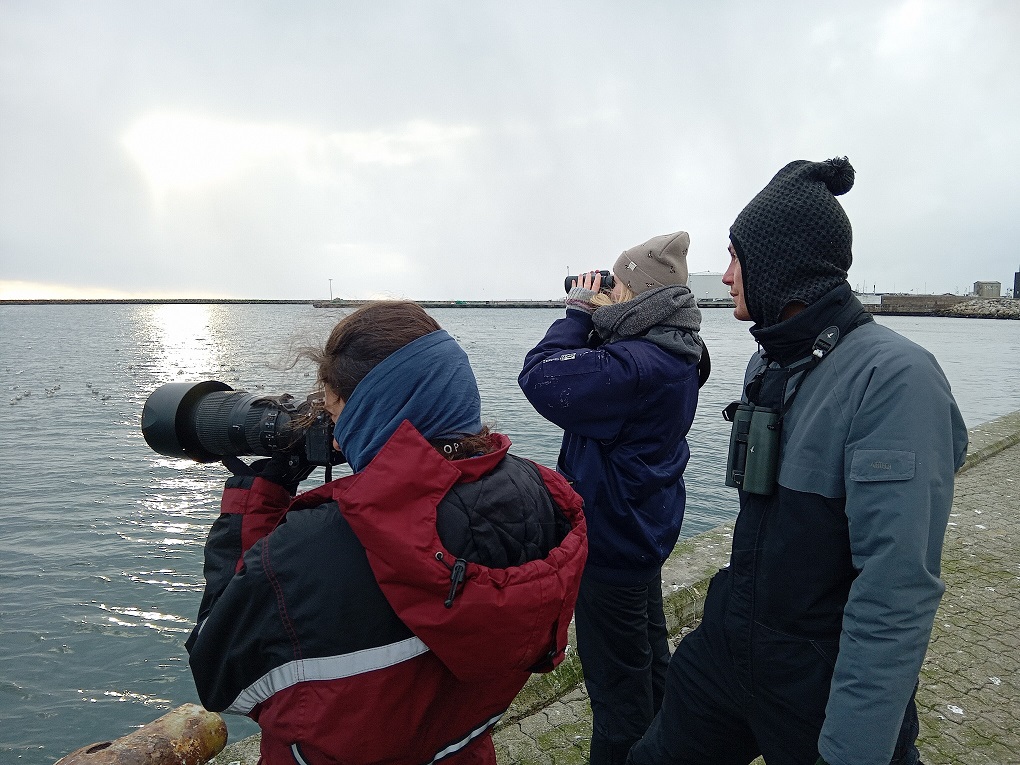
A great team this Autumn and lots of laughs and good times.
Getting back to the best bits, a big thank you goes to the team who have been incredible and there have been many laughs and good times this autumn. It is always great getting to know new people and I wish all of them a successful birdy future and hope to meet up and see them all again in their respective countries and birding spots back ‘home’. Ringing and migration, through some of the coldest, windiest, or sandiest moments have been made fun and there is never a dull moment at Skagen Fuglestation.
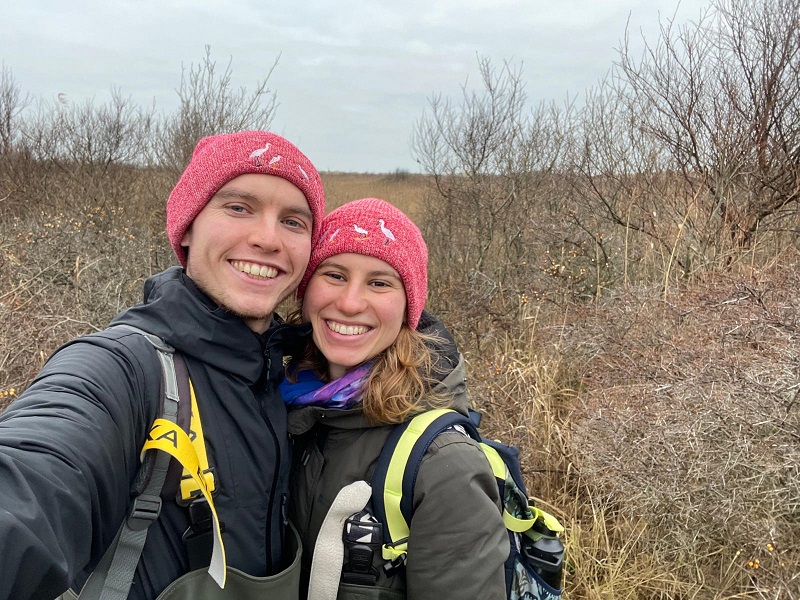
Skagen is an incredible place and shared with loved ones is a must!
I have also loved sharing this amazing place with loved ones, sharing this incredible place, and will be back sometime again. This isn’t the last I’ll be at Skagen Fuglestation, this place is captivating in so many way and I aim to come back one spring for raptors and spring migration at its peak but for now thank you to the team, Lisa for all the geese and Simon for letting me help for another season and being super encouraging and an all-round wholesome, super knowledgeable and cool kind of station leader.
Highlights from the observatory:
- A Red-breasted Goose (Rødhalset gås) a Lille Vildmose.
Ringing totals
Jennes Sø – Michael Ancher
|
Wren |
Gærdesmutte |
1 |
Nordstjernevej – Michael Ancher
|
Greenfinch |
Grønirisk |
1 |
|
Yellowhammer |
Gulspurv |
3 |
Overall total: 5
Today’s observations on Dofbasen from observers in the area
People: Thomas Weston, Mara Glane, Ragnar Smith, Emma Fabre, Lisa Vergin & Simon Sigaard Christiansen.
Cleaning Day
Today was a cleaning day. We cleaned the entire lighthouse. In the morning, we cleaned and organized the kitchen. Ragnar cleaned the windows so now we have a nice view of the outside. Then, it started to snow, so luckily, we didn’t go to the morning obs.
In the afternoon, we cleaned the living-room. We moved the sofa and we found some coins. Then, Simon arrived at the beginning of the afternoon. As you can see, Thomas was focused on what Simon was saying.

When we started to organize the bedroom, we found some fun clothes to wear. Thomas did a scroll with a suit and a shirt.
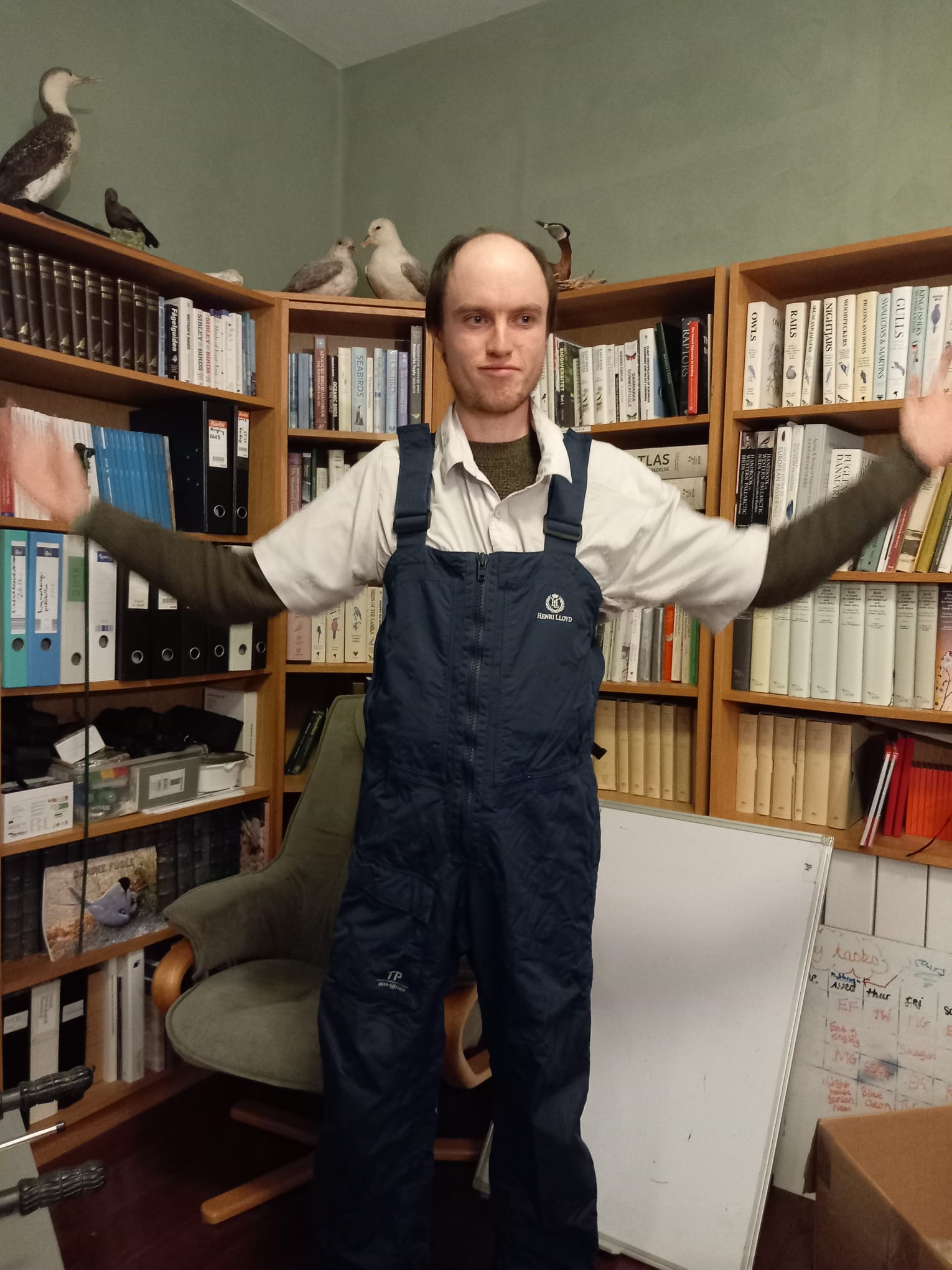
The only birds we saw today were some flocks of Hearing Gulls (Sølvmåge). Ragnar spotted a nice group of Woopers Sawn (Sangsvane). For Thomas the highlight of the day was the snow.
In the evening, Mara cooked pizzas. It was a nice dinner after this cleaning day.
Lettuce begin the cleaning
Today the spring cleaning has begun, or winter cleaning to make it ready for the spring teams’ arrival in 2-3 months. But before we get to that part, we did some other stuff.
We all went to Skagen Harbour, with Emma, Mara and Thomas going to netto to get some bread for attracting gulls and me going out to the eastern pier. But on our way, I spotted two nature photographers walking slowly along the canal going through Batteriskoven. Apparently, they had spotted a Kingfisher (Isfugl)! A scarce winter visitor, but after a record autumn season, it isn’t the biggest surprise that we still have some hanging about in Skagen. Hopefully it will stay for me to get a nice photo-session. But we kept on our way. While they went on their merry way, I fought the wind and finally I stood at the eastern pier and there I spotted something that would be theme of today: Kittiwakes (Ride). While I stood there looking for the ever nonpresent Ross’s Gull (Rosenmåge) I had aprox. 350 kittiwakes migrating over the harbour in the strong northeasterlies. Otherwise, two snow buntings (Snespurv) were finding shelter in the rocks, when I saw a swarm of gulls hanging about Havnevagtkontoret, which was a sign that the others had reached the harbour, so I went on my way towards where I joined them looking at the many gulls. While standing there I saw a passerine fly towards us, and it didn’t look like a pipit! I quickly walked towards the spot it had landed at, but to my deep sorrow it was a flock of house sparrows (Gråspurv), not a crazy rare siberian passerine, lost in Europe.
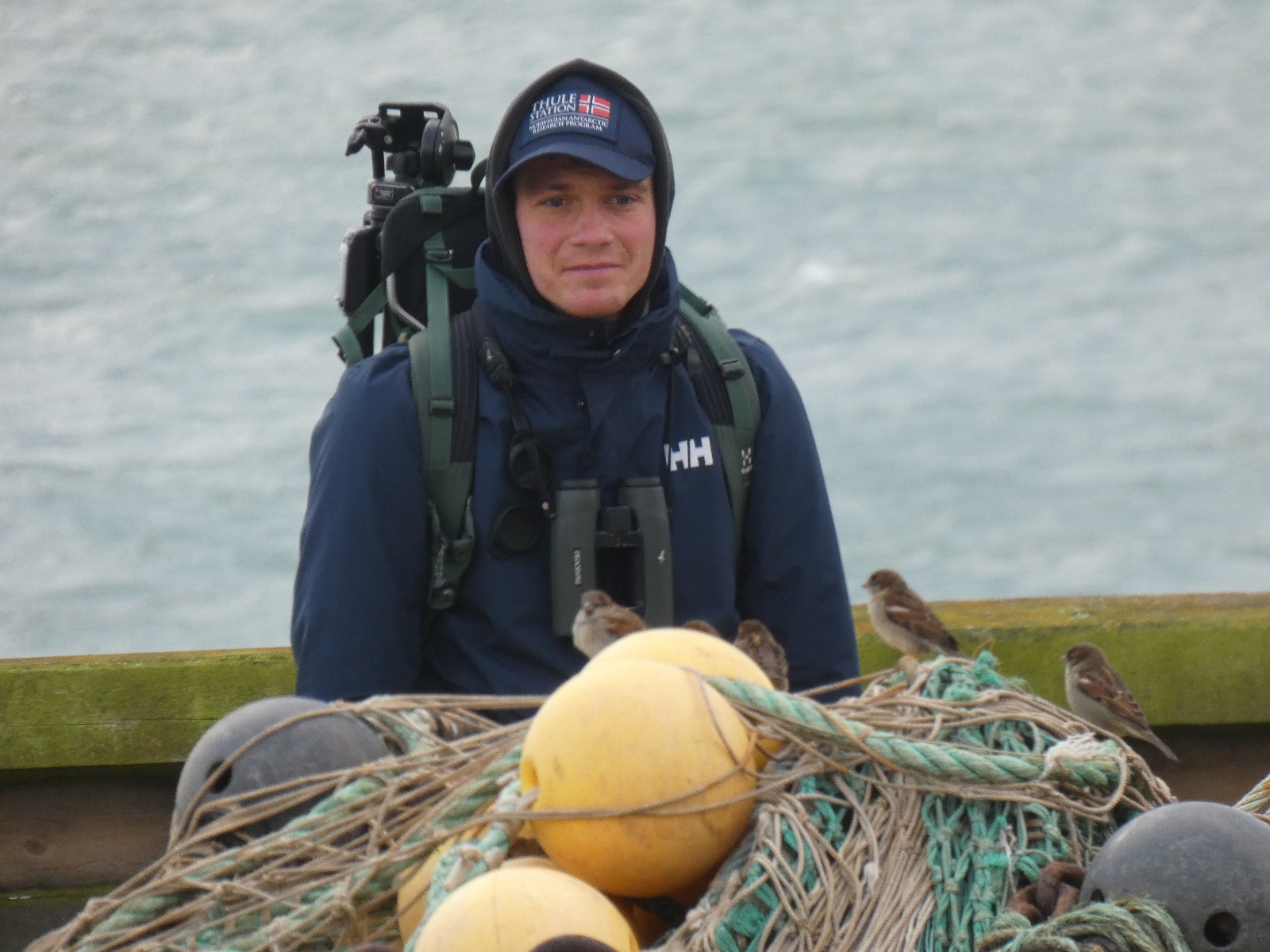 Me (Ragnar) being completely devasted by the relevation that the passerine I saw turned out to just being six House Sparrows. Absolutely bambozzled, duped, deceived and last but not least, hoodwinked
Me (Ragnar) being completely devasted by the relevation that the passerine I saw turned out to just being six House Sparrows. Absolutely bambozzled, duped, deceived and last but not least, hoodwinked
After looking at gulls, colour-rings and a Razorbill (Alk) we went to the last spot in the harbour that could result in a fun bird, at the southern part of the harbour and western pier. I set up the scope in the cover of a shed and looked towards southwest and as far as the eye could see, kittiwakes, kittiwakes and kittiwakes. If I had sat at Worlds End 3 I could probably have clicked a four, if not five digit amount of kittiwakes. But now I was standing in Skagen Harbour and watched them fly by in flocks of 10, 20, 30 and even 40 over the harbour, what a sight. But we kept on cracking and saw a further amount of 5 Rock Pipits (Skærpiber), some gannets (Sule) and even more gulls.
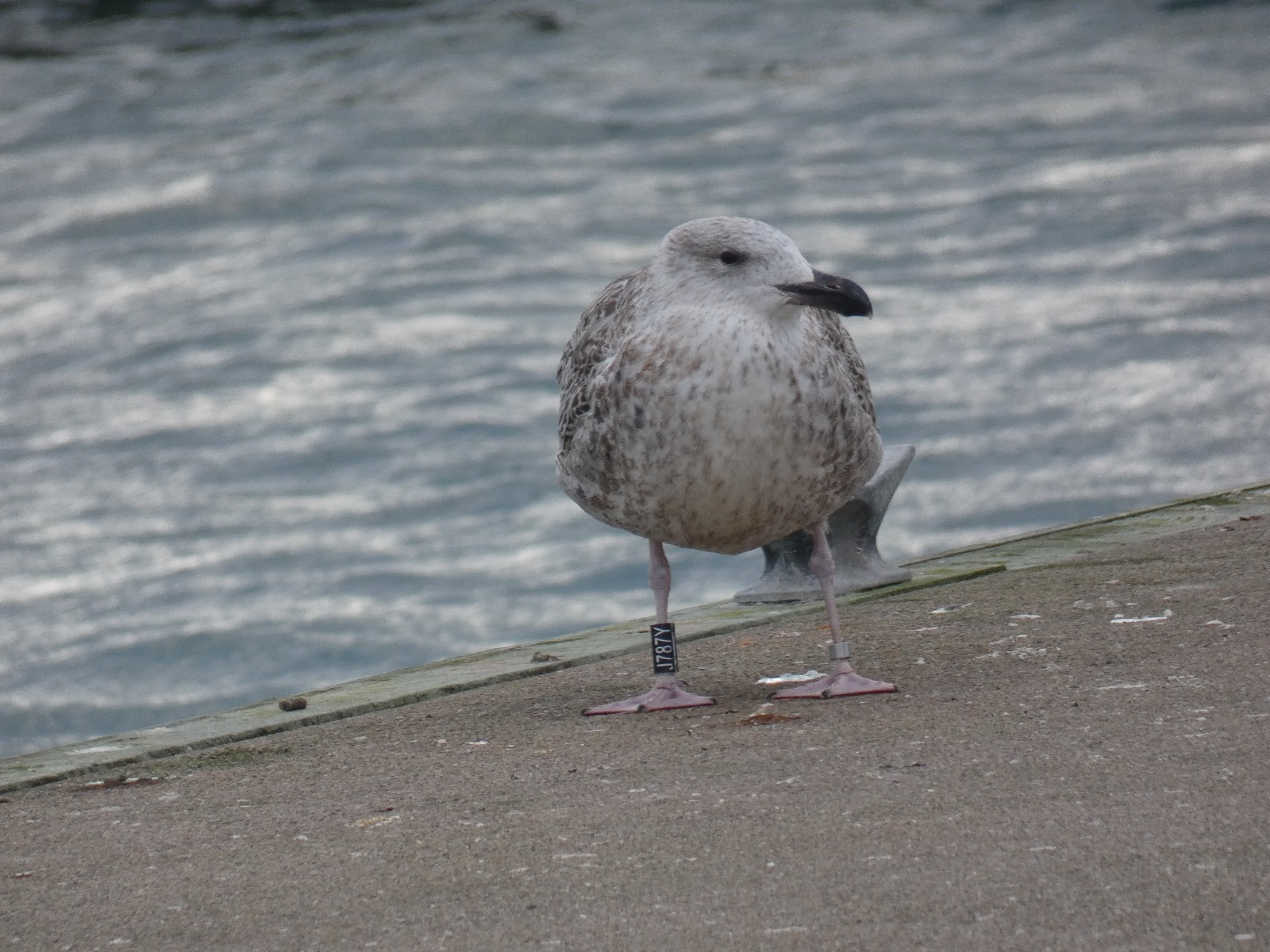 Norwegian ringed Greater Black-backed Gull (Svartbag) 1k - black ring with starting letter "J" 99,99% of the time indicates its from Norway
Norwegian ringed Greater Black-backed Gull (Svartbag) 1k - black ring with starting letter "J" 99,99% of the time indicates its from Norway
We finally had enough of standing in 12 m/s northeasterly winds and went towards a bakery that Thomas knew about for some cake and coffee. There we had a well-deserved cake and coffee and enjoyed the shelter from the wind, but it was, as most other things in life, temporary and we got back on the bikes before going to Lidl and then the observatory as the cleaning was waiting for us. When we came back, we immediately started! The first place to be cleaned were the attic and the laboratory, not as bad as one might imagine, and we got help from a special little fella.
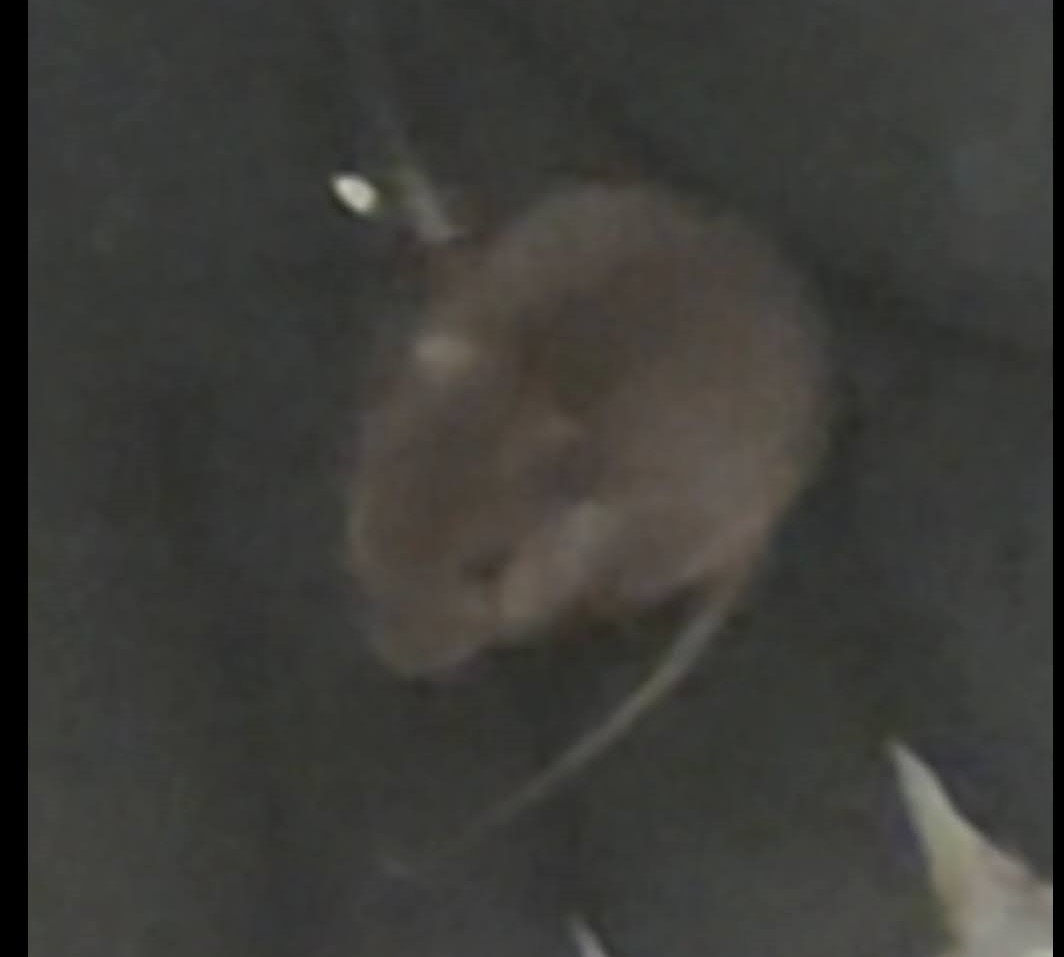 He shall be named... Jimbo
He shall be named... Jimbo
Simon came by for the evening meeting and to help set up a game plan for the cleaning as we have 1-2 days to finish the cleaning before the rest of the volunteers leave.
Now its late in the evening, sun rise is at around 0840 and the temperatures are in the single-digits, a stark contrast to when I arrived in July were sunrise was 0420 and t-shirt was mandatory wear if you were to stay outside the whole day.
Link to today's observations from observers in the area
People at the station: Thomas Weston, Mara Glane, Ragnar Smith, Emma Fabre & Simon Sigaard Christiansen.
Comings and Goings
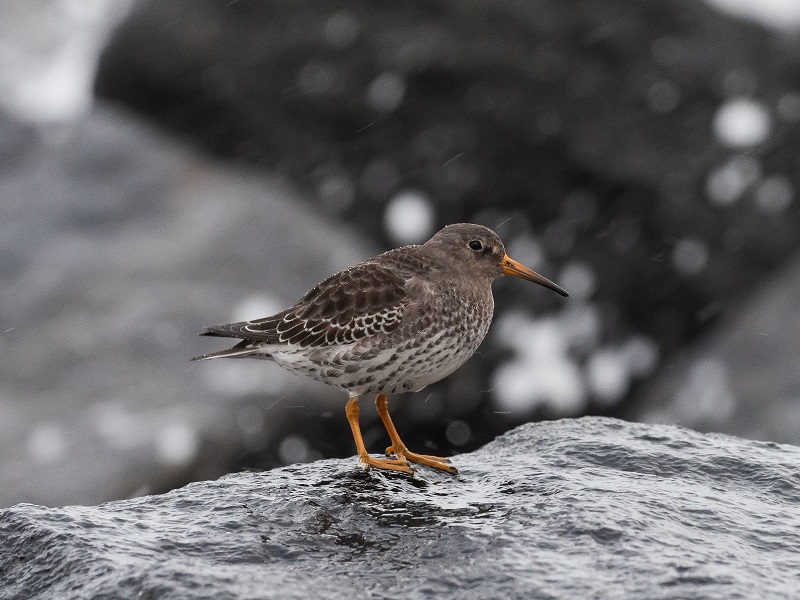
Purple Sandpiper (Sortgrå Ryle) by Ragnar.
No migration counts of any kind today, but Knud was out early this morning. He had an amazing morning sighting some Orcas (Spækhugger), 16 Black-headed gulls (Hættemåge), 13 Caspian Gulls (Kaspisk Måge) and an Iceland Gull (Hvidvinget Måge) all from the Worlds End 3 area. After a quiet start, alerted by the messge Mara went out to see the gulls but ended up finding two late Stonechats (Sortstrubet bynkefugl), a presumed overwintering pair before a chill afternoon was had. Ragnar had a quiet morning too and saw two Purple Sandpipers (Sortgrå Ryle) near the obs, which may or may not have been the same two seen this morning from the kitchen. A quiet afternoon was had by him too. Eleanor and I walked into Skagen to catch the train to go to the airport. The last week in Skagen sharing this area has been incredible and really does prove what an amazing place we are very fortunate to live and work in. A bit of a crazy whistlestop tour of everything Skagen Fuglestation resulted in a range of tasks being completed. On the train today we ended up seeing Hen Harrier (Blå kærhøg), a Grey Heron (Fiskehejren), flocks of Whooper Swans (Sangsvane) and large pre-roost flocks of Jackdaws (Allike). Eleanor departed back to the UK but will be back for sure when possible. I departed back to the obs, but in a half sleep state ended up going halfway to Hirtshals, ooops. I rerouted myself and three trains later I was back in Skagen.
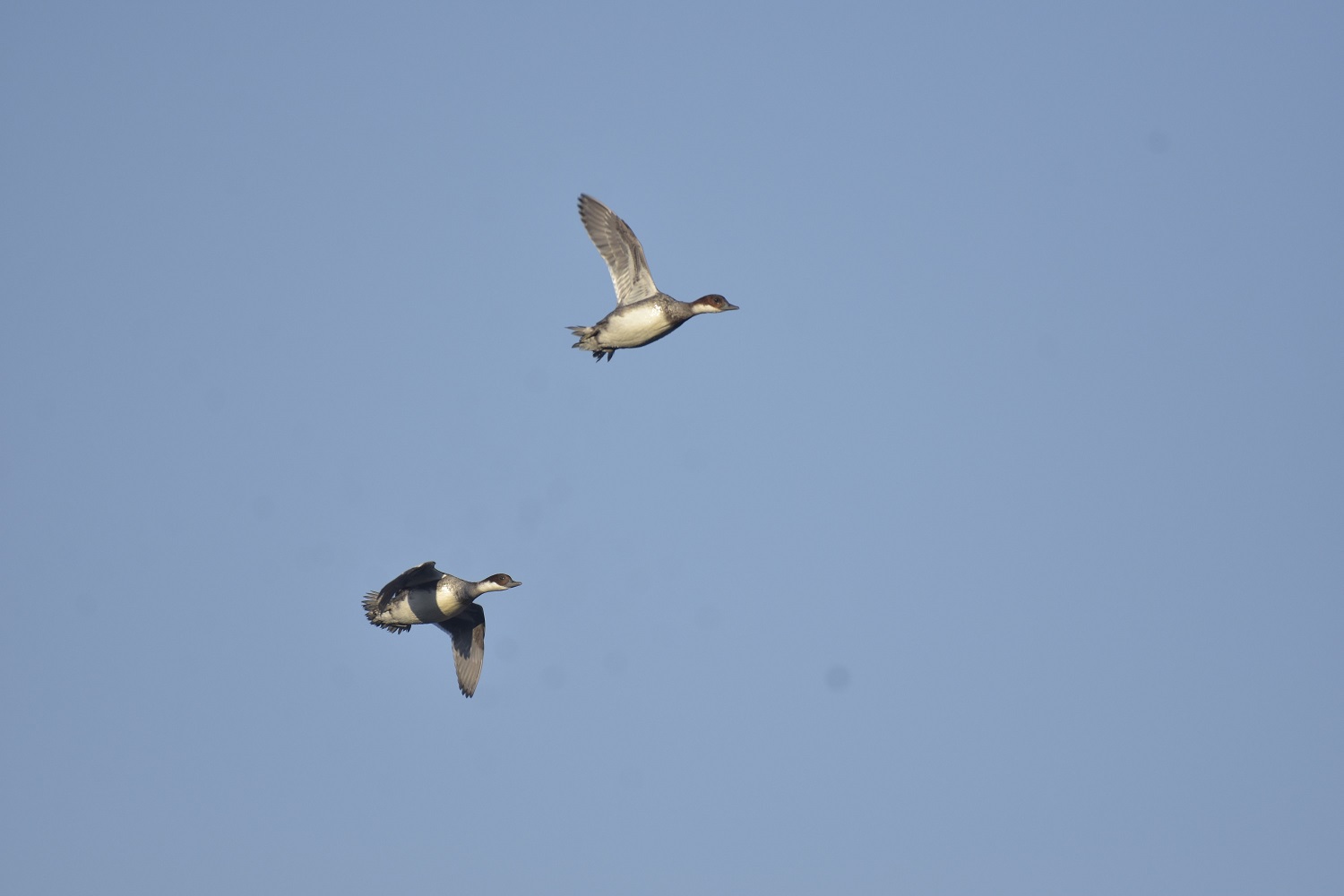
Smew (Lille skallesluger) in Copenhagen by Emma.
Thank you to Simon, a lift was had and quickly back at the obs. Ragnar made a nice meal this evening and Emma returned from her travels to Copenhagen where she saw a range of waterfowl and birds including Smew (Lille skallesluger). A species she had been keen to see for a long time and ended up seeing them almost everyday!
Highlights from the observatory:
- Orca (Spækhugger)
- Iceland Gull (Hvidvinget Måge)
Ringing totals
No ringing today
Overall total: 0
Today’s observations on Dofbasen from observers in the area
People: Eleanor Harris, Thomas Weston, Knud Pederson, Mara Glane, Ragnar Smith, Emma Fabre & Simon Sigaard Christiansen.
